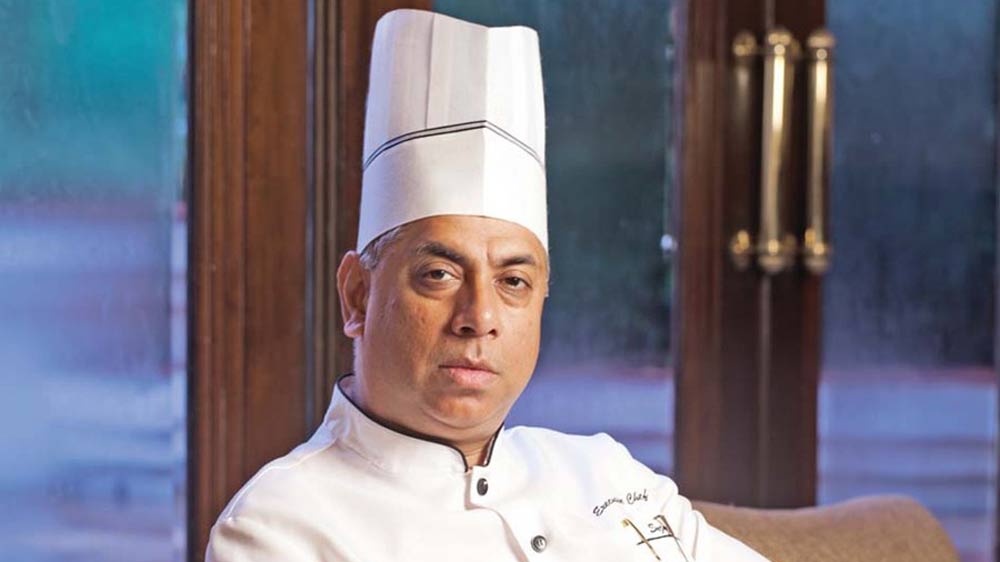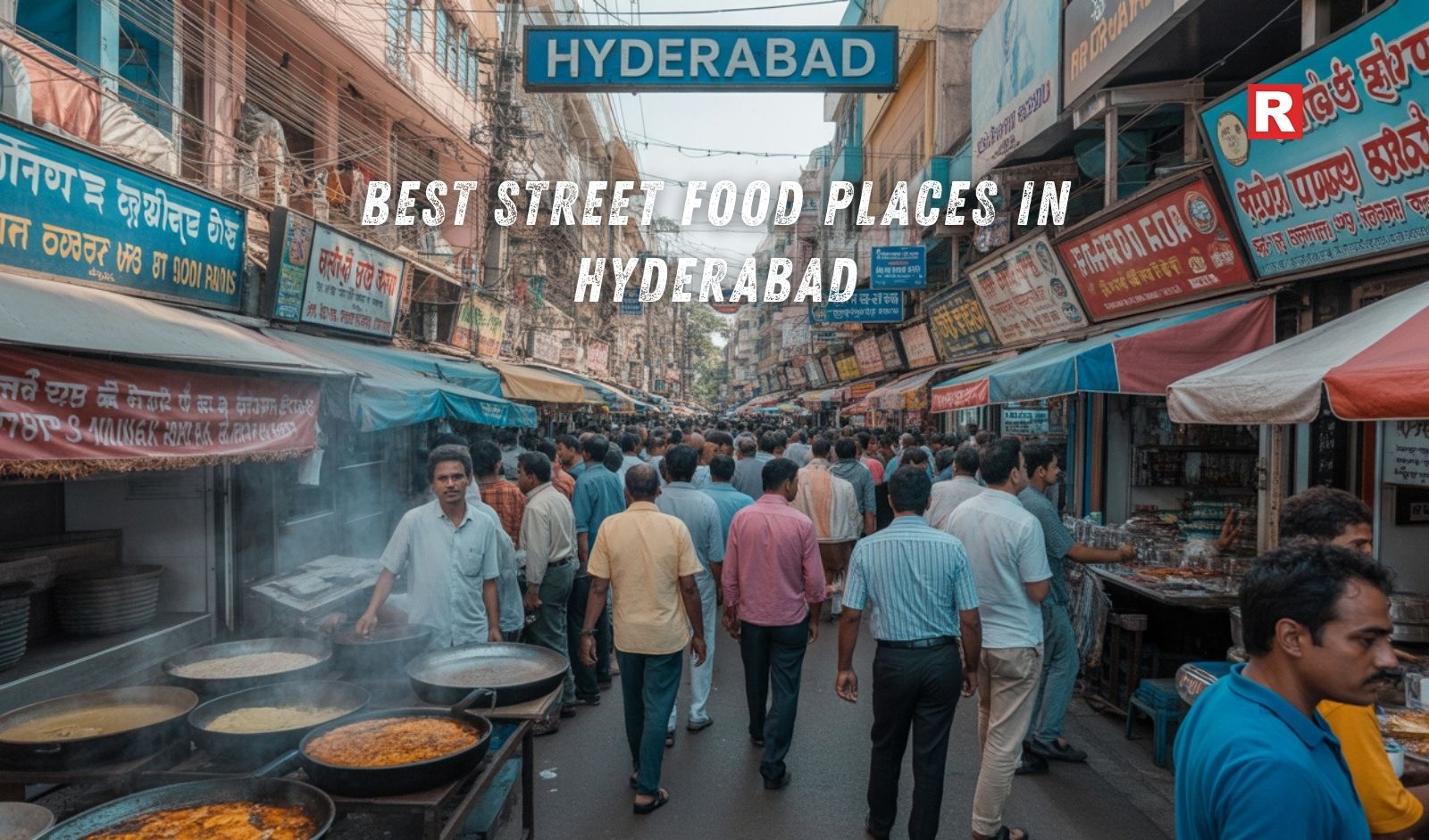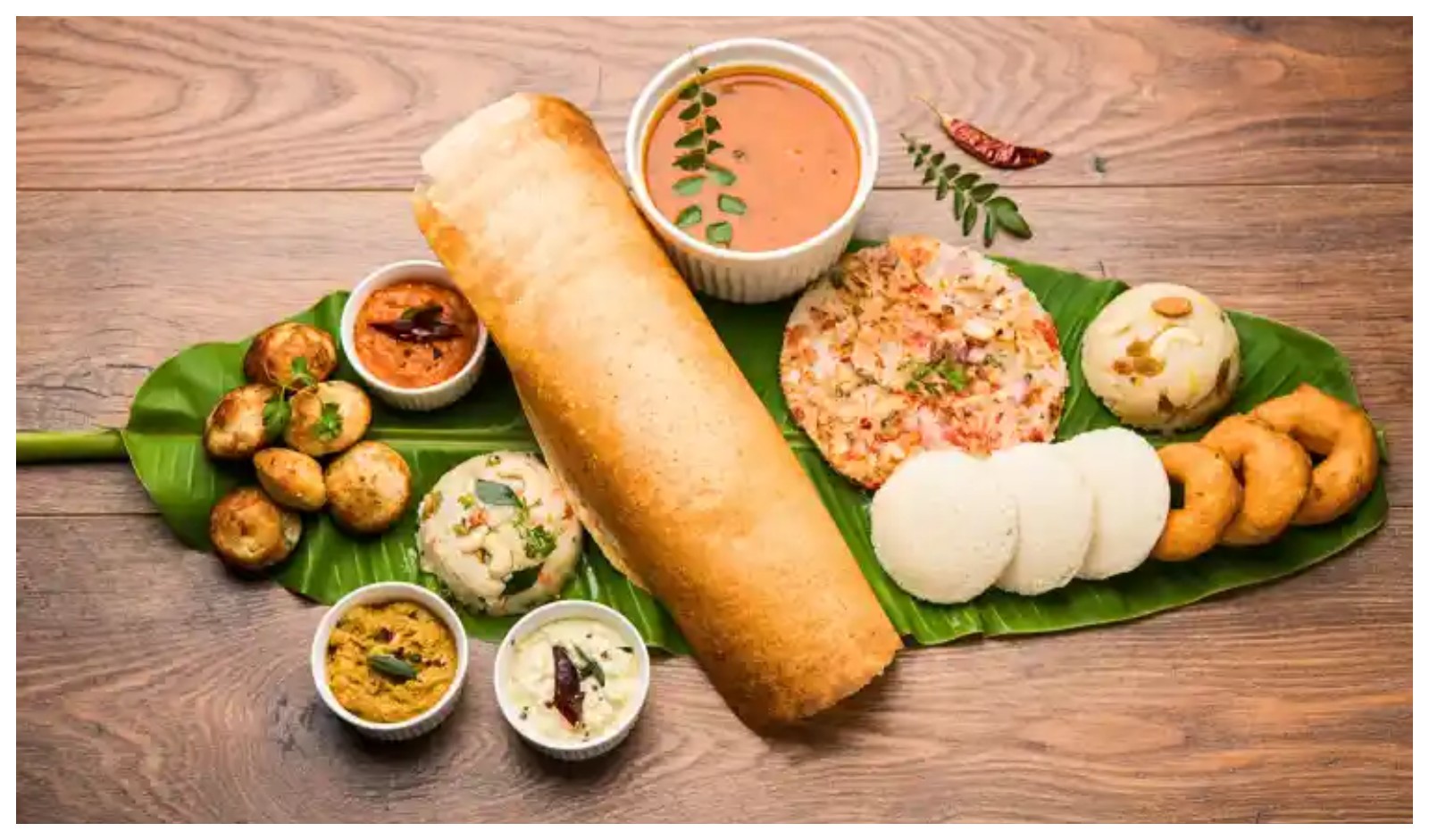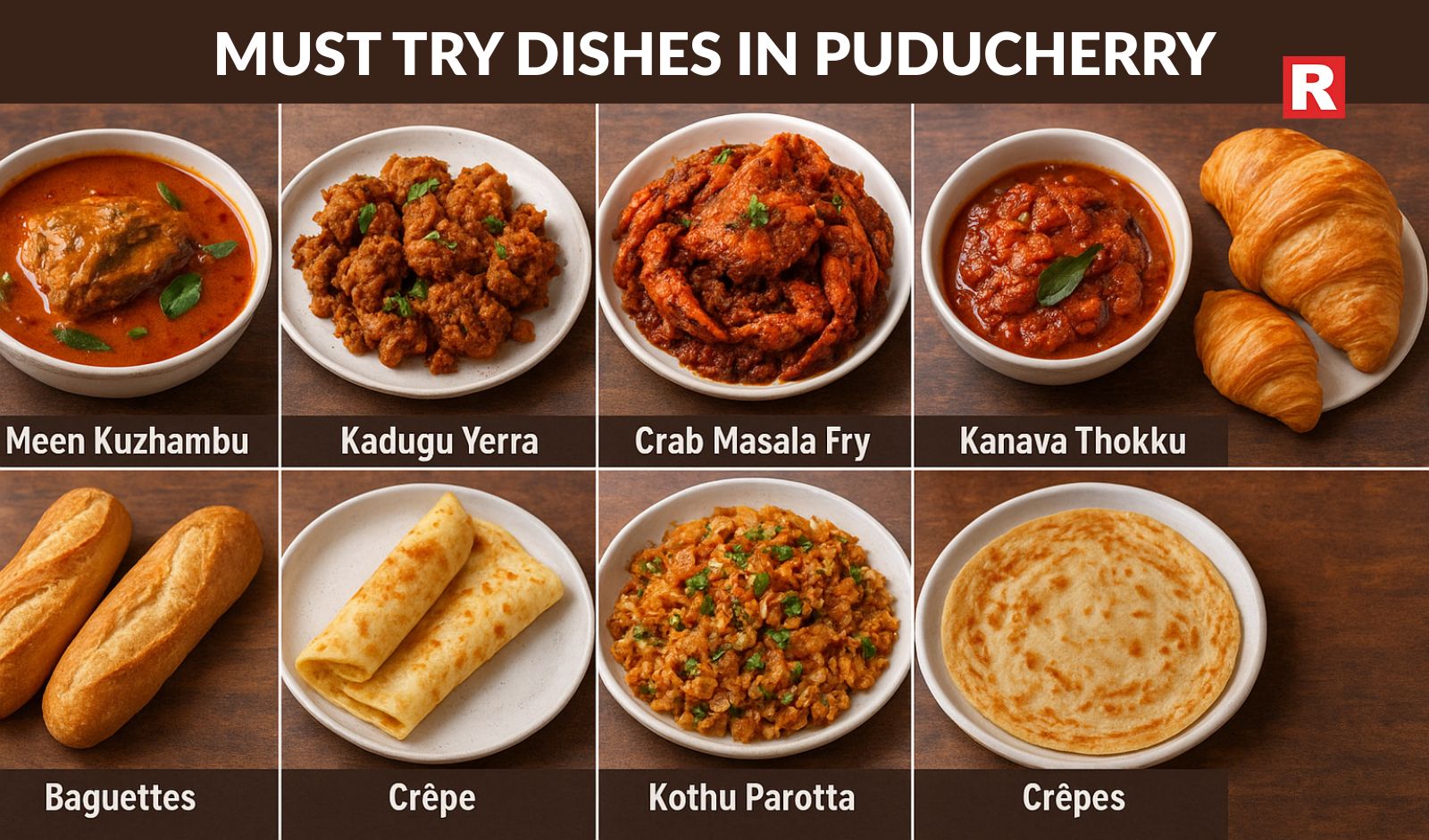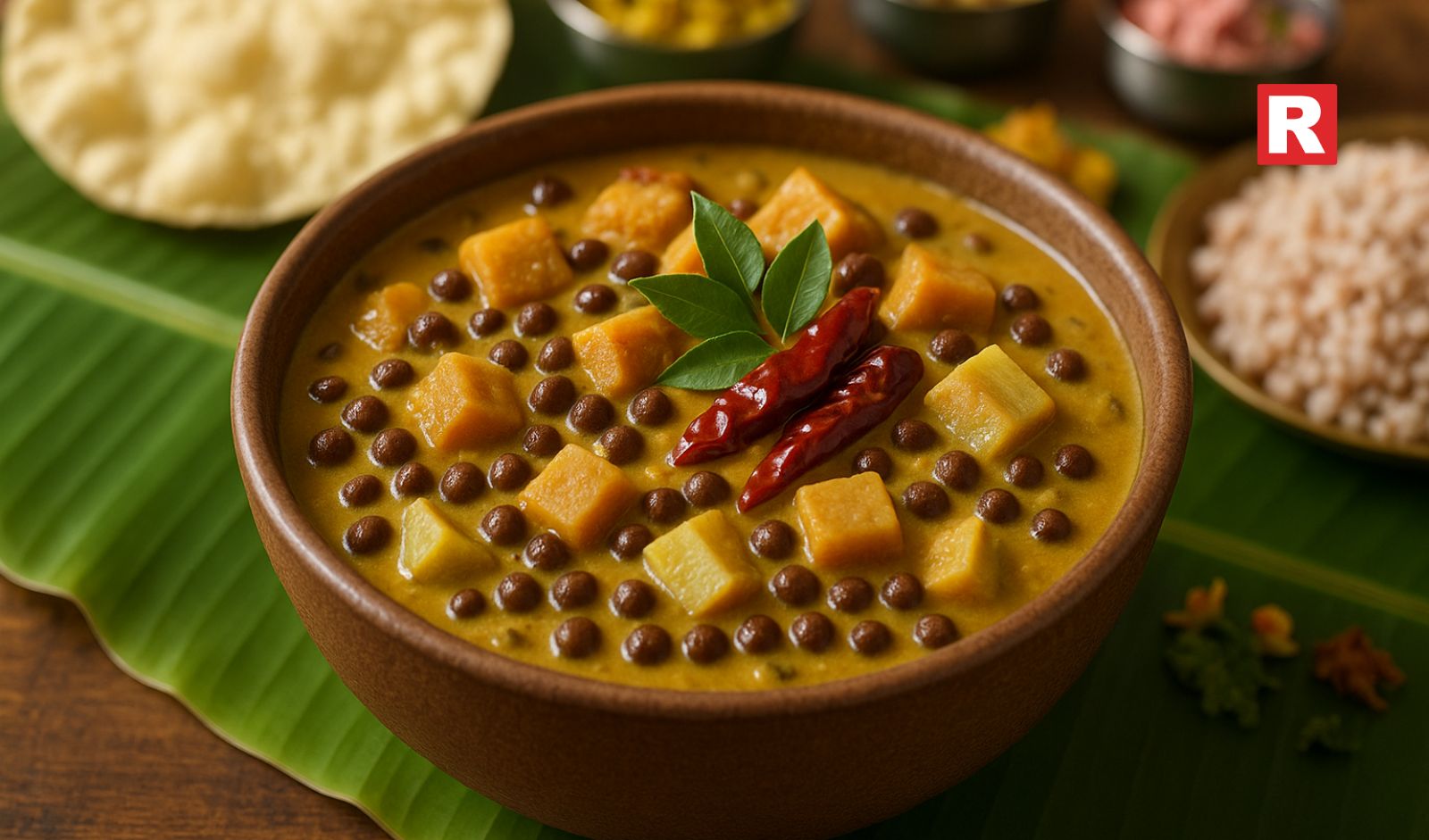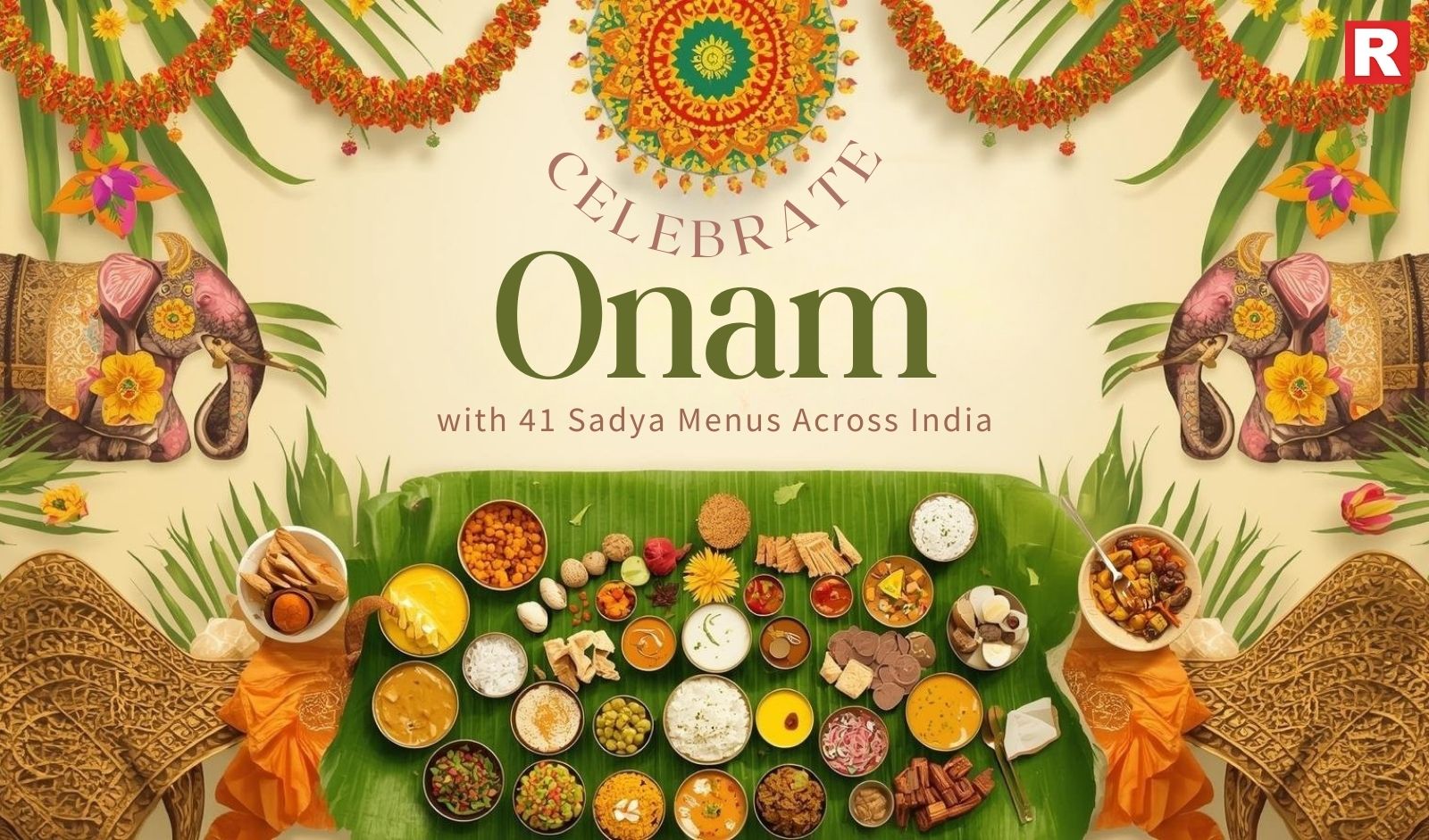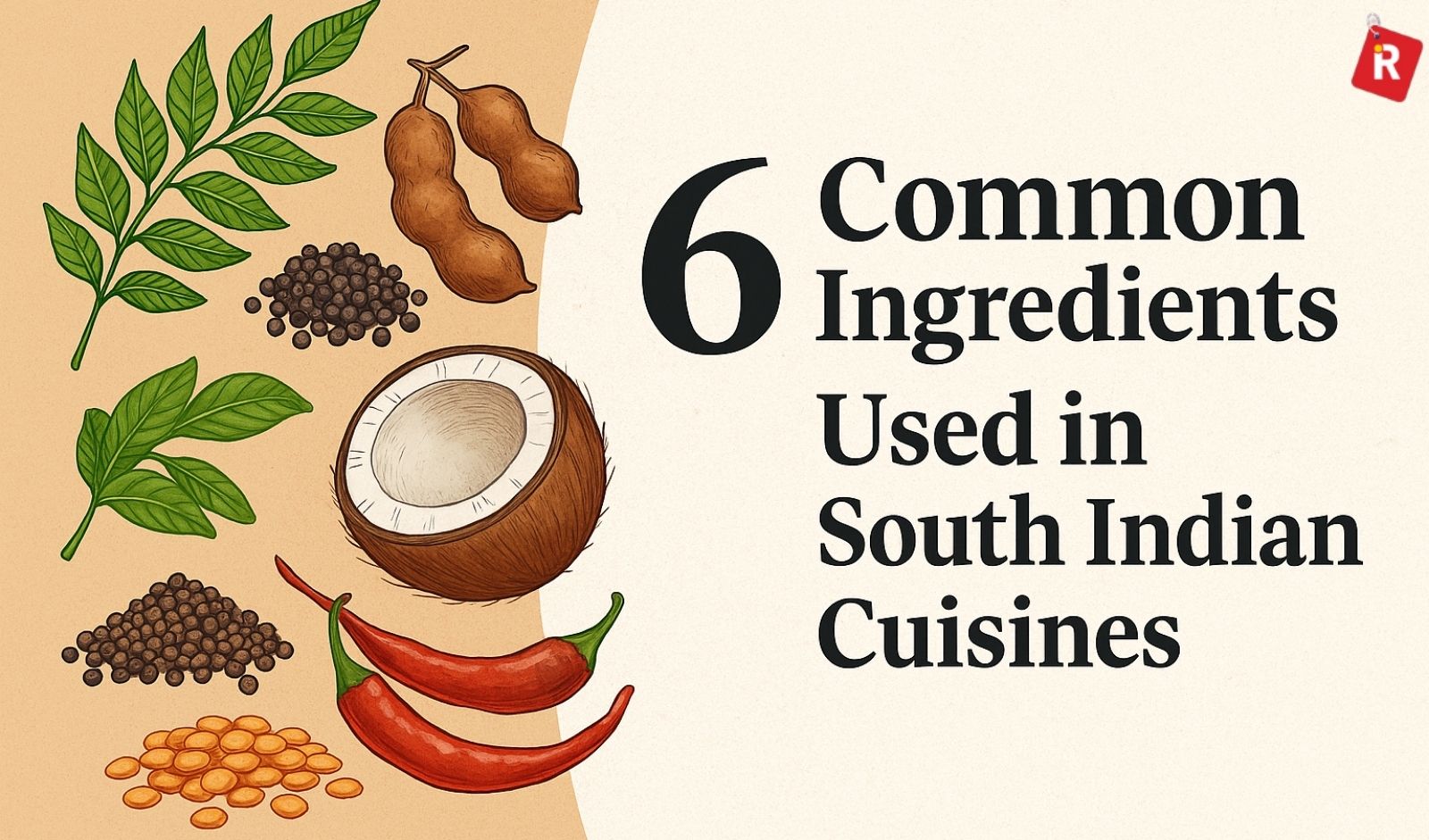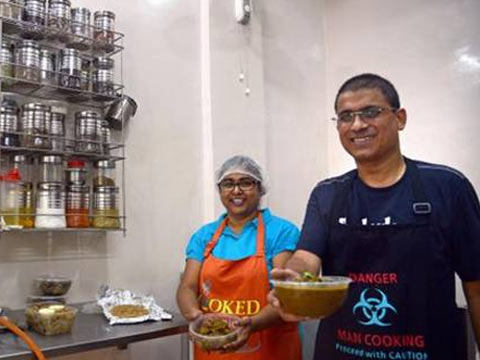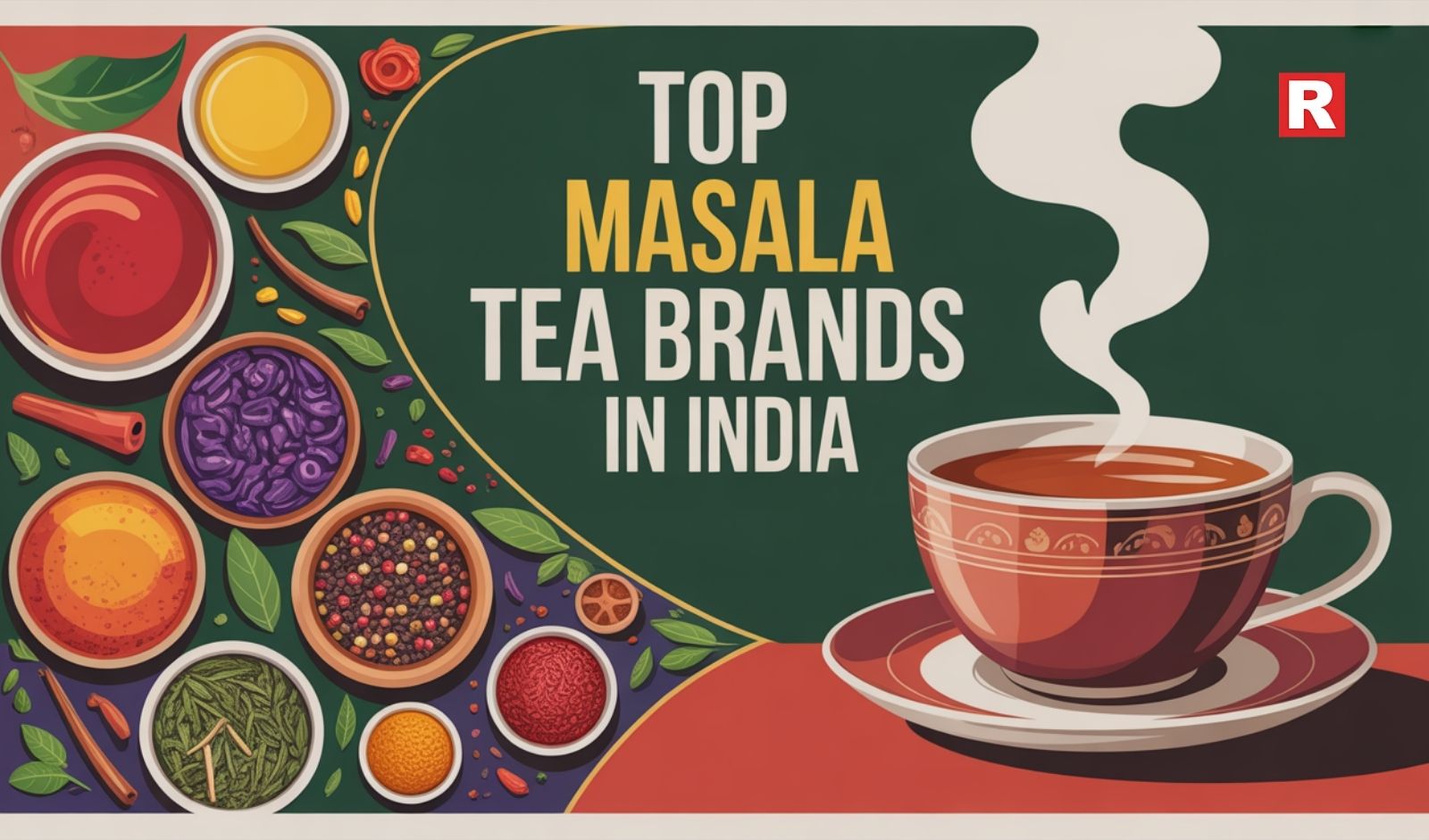
Every Indian state is represented by its own unique cuisine. Food is something that everyone relishes, whether it is out of necessity or taste. Food cuisines like Punjabi, Mughlai, South Indian, Gujarati or Rajasthani has its own fan following. The India Food Industry foresees a huge growth in the coming years and the food sector has emerged as a high income and profit sector because of its frequent value additions.
The food industry is presently placed at US$39.71 billion and is all set to grow at a Compounded Annual Growth Rate (CAGR) of 11 percent to US$65.4 billion by 2018. Further tingling the taste buds of foodies, with over two decades of experience, Sujan Mukerjee provides mouth watering South Indian delicacies through Southen Spice.
In conversation with Restaurant India, Sujan Mukerjee, Executive Chef, Southern Spice talks about his passion for cooking and various cuisines available at the restaurant.
What inspired you to become a chef? Tell us something about your journey.
I was always passionate about the kitchen at my grandparents’ home. I still recall my sense of happiness when I used to see my grand ma cook in our ancestral home. So, this journey started at a very young age. I started my career 27 years back with Taj Group of Hotels. I had numerous opportunities to learn and grow with the company. I was privileged to be part of the opening team of a few iconic restaurants in the country like Masala Art, Souk, Sonargaon, Chinoiserie, and recently opened Taj International luxury property at Dubai-Taj Dubai. I also received the best chef award in 2010 by the Ministry of Tourism.
What has made Southern Spice one of the favourite customer choice restaurant?
By serving authentic cuisines from the four southern states and a deep connection with the culture, design and décor of the region, this distinctive restaurant has reinvented itself as a ‘culinary destination’ for food connoisseurs and gourmands from across the world. Known as the country’s most iconic South Indian specialty restaurant, Southern Spice’s authentic and inspired cuisine, splendid ambience and warm service ensures the most-genuine culinary experiences for its guests. Authentic ingredients, traditional flavours and homemade recipes come together to ensure that guests are served the most exotic fare that is truly traditional, yet enhanced with a touch of modernity. Southern Spice is an essence of close to two decades of extensive research by the restaurant’s expert Chefs, reflecting the culinary legacy of the four southern states, acquiring knowledge, cooking techniques, compiling family recipes and traditional banana leaf fare.
What menu tweaks are you planning to introduce to stand out from the crowd?
The menu at Southern Spice is a unique compilation of vegetarian and non-vegetarian delicacies inspired by the culinary journeys into the interiors of Tamil Nadu, Kerala, Karnataka and Andhra Pradesh. Southern Spice reinvents tradition with the liberal use of premium ingredients such as asparagus, soft shell crabs and scallops. Unusual to the South Indian palate, these imported ingredients are cooked in authentic South Indian spices to give the meal an interesting twist. Adding an international touch, the menu has been expertly paired with wines and spirits that best complements the meal.
One of the highlights of the meal experience is the special Rasam menu, which gives Southern Spice a contemporary edge, yet keeping the experience rooted in tradition. Rasam, predictably served as an appetiser, , now gets a hint of variance where five different varieties of rasam, both vegetarian and non-vegetarian, will be served during the course of the meal.
The Traditional Sadhya – a pure vegetarian 28-course meal – is served in a ritualistic way, exclusively in the three beautifully-designed Private Dining Rooms. These rooms reflect the culture and tradition of the four Southern states through the handcrafted wall and ceiling murals, each with their own distinct style. The silver and gold service-ware are the focal point of the table-top in these rooms, which will prepare guests for the most-sensuous dining experience.
What are the things that you consider while designing your restaurant menu?
Authenticity and traditional cooking method of every dish is the key factor in designing the menu. Our clientelealso play a major role while planning the menu for the restaurant. Their preferences are quite varied and we try to balance the menu as per their likings. Availability of ingredients is also vital and we ensure that we procure the best quality of ingredients for all our dishes. Freshness is the key word and together with the usage of organic elements, the restaurant ensures that for the wellness conscious guests, the magic works not only on the palate, but also on the very core of one’s being. Wealso use English vegetables, which are uniquely spiced with traditional methods of cooking and this is highly appreciated by the guests.
What is the supply chain process in your hotel? Who are the suppliers? Can you please name some?
We understand the criticality of good supply chain management, particularly for perishable ingredients, taking all possible measures to ensure that the food ingredients are well-preserved and don’t lose their freshness and nutrient value while in transit. All our seafood are fresh catch. Farm to Table continues to be a key area of focus for us as we believe in ensuring freshness and high quality of goods from source to our kitchen.
Who is your target customer?
Southern Spice is a destination restaurant and no visit to Chennai is complete without a mealat our restaurant. . With authentic and inspired cuisine, splendid ambience and warm service, Southern Spice has established itself as a world-renowned dining destination and we are committed to deliver the most authentic culinary experiences to our guests from across the country and the world.
What are the different types of cuisines served at your restaurant?
Southern Spice serves authentic South Indian cuisine from four states of India – Tamil Nadu, Kerala, Karnataka and Andhra Pradesh. We have selection of dishes ranging from the Tamil Brahmin community to the Malabari Muslims of Kerala. The team of chefs have also done in-depth research into specific regional cuisines of Mudaliar and the Bunt community.
What is the contribution of a well laid menu in restaurant business? How are new techniques in food helping the restaurant grow?
Menu is an integral part of any restaurant business. At Southern Spice, we offer food connoisseurs a luxuriously authentic experience, which allows them a window into the locality’s culture and traditions. Southern Spice is more than just a restaurant, it is a destination. It is the result of contributions from the chefs who have travelled to the interiors of South Indian states and unearthed traditional recipes first hand. We have been instrumental in merging modern culinary techniques with ancient recipes, like the Scallop Sukka, Asparagus Usili and Chocolate Poornam Mousse.
How familiar are you with the legalities involved in opening a restaurant? Are you planning to open up your own restaurant?
Yes, I am very much familiar with the norms. However, I have no plans of opening a restaurant.

Hyderabad's street food scene is lively and friendly. While everyone knows the city for its biryani, the little food stalls and night vendors are not to be underestimated. They really show off how much the city loves strong tastes and makes people feel at home, locals and travellers alike.
In old Hyderabad, you can still taste the royal touch of Nizam kitchens. You'll see it in dishes cooked slowly with lots of spices and made the old-fashioned way. But in the newer parts of town, it is the modern street food that brings the young people together every night. What makes it all so great is how the city's history mixes with daily life. Just walking around Charminar or Gachibowli, you'll find tons of stalls selling dosas, kebabs, chaat, and Irani tea. This mix of old and new is what Hyderabad street food is all about.
If you want to visit Hyderabad on your next trip, but don’t know where to find the best street food, then read this article, as we have compiled a list of the best places there.
Read more: Top Famous Veg Street Foods in Kolkata That You Must Try Once in Your Life
What Makes Hyderabad’s Street Food Unique?
Hyderabad's street food is special because it mixes Mughlai, Andhra, Telangana, and Irani tastes. Vendors use spices passed down through families, which gives the food a taste that locals know and love. You'll see slow-cooked meats, crunchy snacks, flavorful chutneys, and sweets that show Persian influence. Lots of these food stalls have been around for years, serving up the same great flavors that keep people coming back. Irani bakeries, tiny dosa places, kebab stands, and chaat spots each add something special. This mix of history and local flavors makes Hyderabad's street food feel rich and diverse.
Popular Areas for Street Food
- Charminar: You can find classic Hyderabadi food here, stuff like kebabs, cookies, biryani, and haleem seasonally.
- Mozamjahi Market: This place is great for old-school bakeries, fruit ice cream, and traditional desserts.
- Tank Bund: It becomes very lively at night with lots of snack vendors selling all sorts of delicious snacks.
- Sindhi Colony: People know this spot for chaat, sandwiches, pav bhaji, and fast-food-style snacks.
- Gachibowli: This area has a bunch of modern food trucks and stalls that are popular with young people who work in offices or students from neighbouring schools.
- Madhapur: A cool area to grab a quick bite from trendy stalls and fusion street food.
- Ameerpet: This place is popular for all kinds of dosa and cheap snacks, perfect for students.
Know more: Famous Street Food to Try in Chandni Chowk
Top 10 Street Food Spots in Hyderabad
1. Ram Ki Bandi
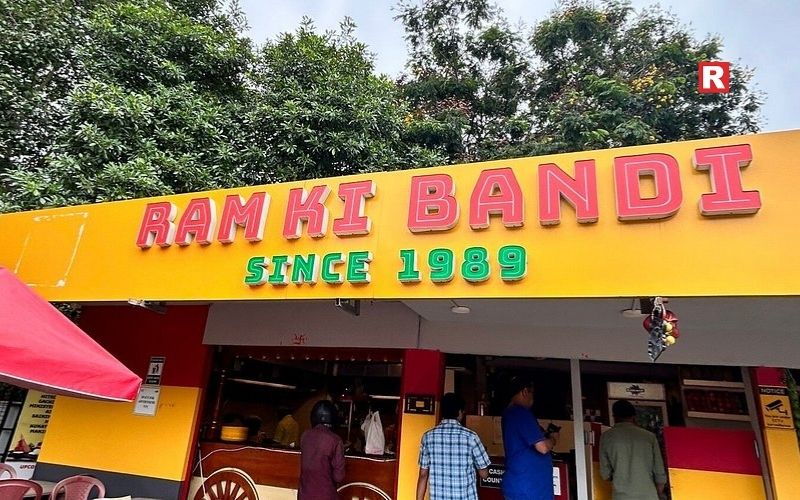
Ram Ki Bandi is famous for its dosas and idlis, which they make early in the morning with lots of fillings and chutneys. People especially enjoy the cheese dosa, pizza dosa, and upma dosa because they taste both familiar and special. The service is usually fast, so it's popular with people on their way to work and students. You can expect to pay around ₹150 to ₹250 for two people. It's best to go between 3:30 AM and 8 AM to get the freshest food. The location near Nampally is the most popular, but you can find other locations around the city. It's always busy because of its simple setup and tasty food.
2. Gokul Chat
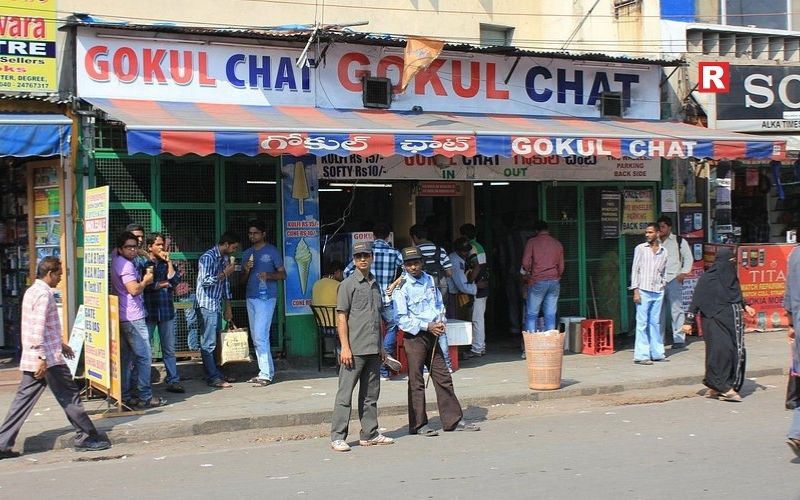
If you're looking for great chaat in Hyderabad, Gokul Chat in Koti is a super popular spot. It's been in business for about 50+ years. They're famous for their pani puri, dahi puri, tikki, and pav bhaji, and they also have fresh fruit juices. The food always tastes the same, and you get a generous portion for your money. You'll see all kinds of people there, from students, families, to people who've been going for years. It'll cost you around ₹200 to ₹300 for two people. What makes them special is that they mix North Indian chaat with local spices. Many people say you have to try it when you're checking out the street food in Hyderabad. But do make sure to carry cash with you, as they do not accept UPI payments.
3. Sindhi Colony Food Street
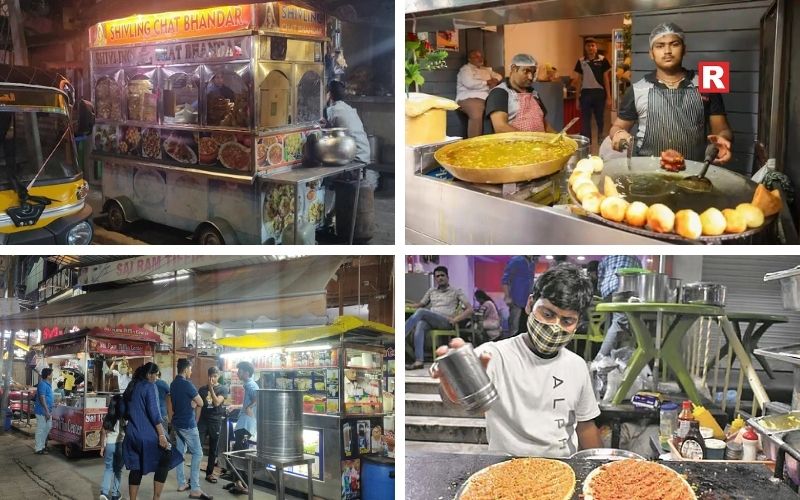
If you love street food, you have to check out Sindhi Colony in Hyderabad. It's got tons of options, including many for vegetarians. People know the area for its chaat, pav bhaji, sandwiches, and quick snacks, which are perfect when you're craving something in the evening or just hanging out. Lots of the stalls have been around for ages, giving the whole place a friendly vibe. You can grab crispy pani puri, rich milkshakes, super cheesy sandwiches, and smaller bites that are great for sharing with friends or family. The prices are fair, and it's always buzzing with activity. It's super easy to taste a bunch of different things in one go.
4. Madhapur Street Food and Food Truck Lane
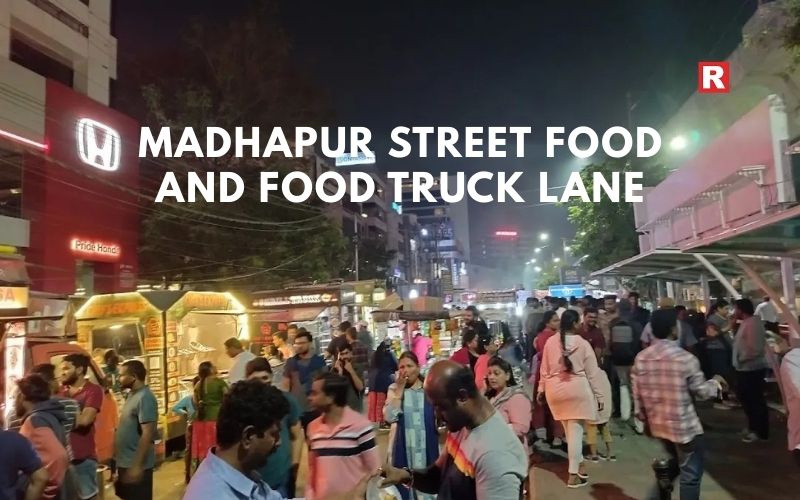
Madhapur's a cool place for street food now, packed with food trucks selling things like shawarma, momos, noodles, sandwiches, and some creative snacks that mix flavors. You'll mostly see younger professionals and college students hanging around. Shawarma, momos, and grilled chicken are big hits there. Expect to pay around ₹300 to ₹450 for two people. It's best to go after 7 PM when the majority of the food trucks are starting to cook up fresh food. Being close to Hitech City gives the place a lot of energy, and with so many choices, you can try something different every visit.
What's new: Top 10 Vegan Street Foods in India Every Indian Loves
5. Charminar Food Street
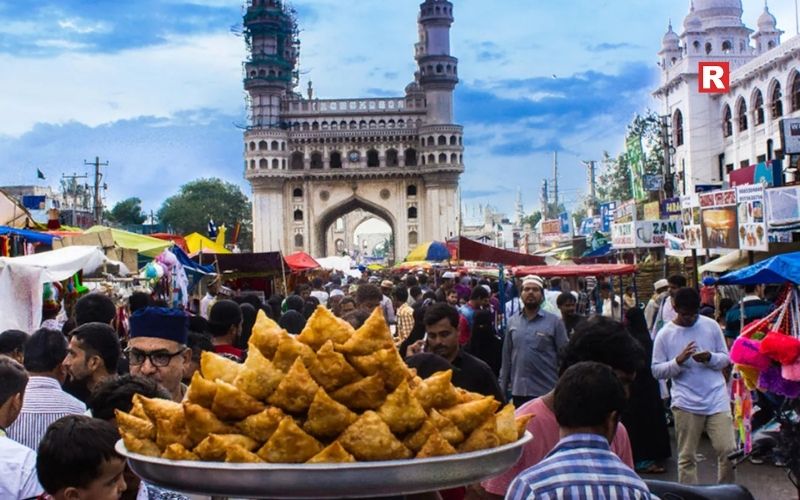
Charminar's streets are known for their tasty food like kebabs, biryani, nihari, lukhmi, Irani chai, and haleem (when it's in season). There's a ton to pick from, especially when night falls. You'll see vendors who've been around for ages and new little stands selling local favorites. The best time to go is after 7 PM. During Ramzan, the area really comes alive with special food and extended hours. It's a great spot to try real Hyderabadi food.
6. Mozamjahi Market
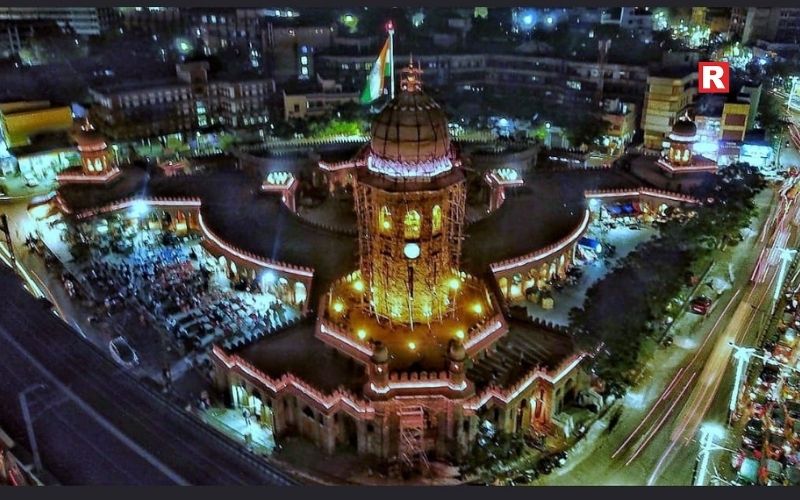
Mozamjahi Market is a favorite spot for its fruit ice cream, baked treats, samosas, and Irani chai. The ice cream is made on a cold stone with fresh, seasonal fruits. Many drop by after dinner for a light dessert or snack. It is affordable too. The best time to go is between 8 PM and midnight when the weather is nice. The area has a calm feel and an old-city vibe that makes eating there even better.
7. Tank Bund Street Food

Tank Bund is a great place to go for an evening walk. You can grab snacks there. Vendors sell things like roasted corn, pani puri, and momos. It's popular because it's chill and the snacks are perfect for a casual hangout. The best time to visit is around sunset or in the early evening. You might not find full meals, but the beautiful lake scenery mixed with the quick snacks makes it a favorite hangout for many.
Check out: 8 Famous Street Foods of Agra You Can’t Miss
A Bite of Banaras: 8 Iconic Street Foods You Can’t Miss in Varanasi
8. Begum Bazaar and Feel Khana Lane
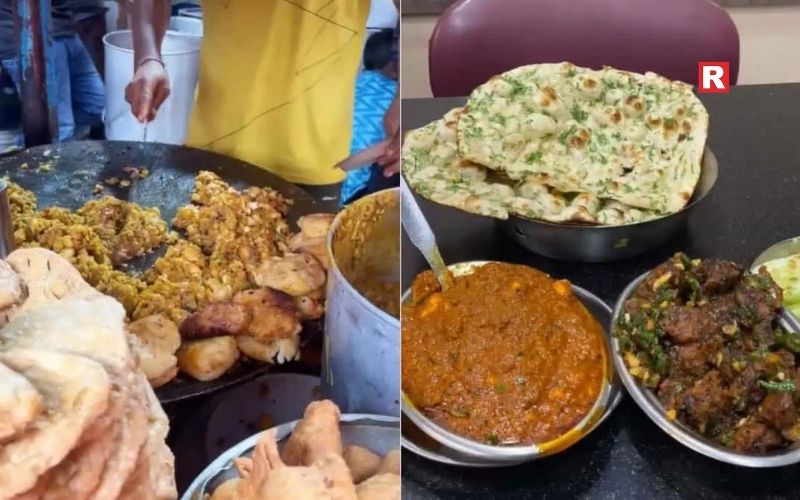
Begum Bazaar and Feel Khana Lane are in the middle of Hyderabad's busy old city. People know these areas for their packed streets, wholesale stores, and lots of street food. Begum Bazaar is a great place to grab traditional snacks, especially kebabs, rumali roti wraps, pulao, and local sweets. Right next door, Feel Khana Lane has cheap eats, tawa dishes, samosas, keema, and evening snacks, which attract employees and customers. If you want to taste real Hyderabadi cooking, these lanes are a good place to start.
9. Nimrah Café, Charminar
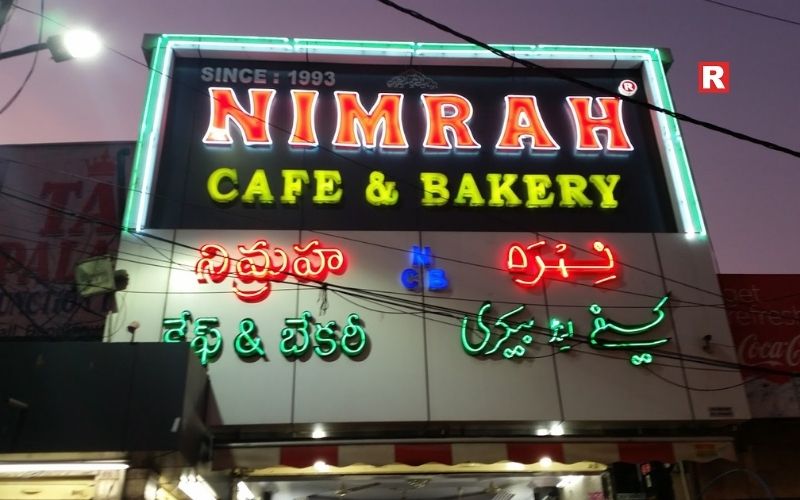
Nimrah Café, close to Charminar, is famous for its Irani chai and lots of different bakery biscuits. It's been a favorite spot for ages, and many people stop by after checking out the market. You gotta try their Osmania biscuits, naan khatai, and also the light, buttery cookies. They're incredibly delicious with the strong, sweet tea. It’s budget-friendly for your wallet and feels like a brief glimpse of old Hyderabad. The best time to go is early in the morning or in the evening when it’s lively but not too packed.
10. Gachibowli Food Trucks and Night Stalls
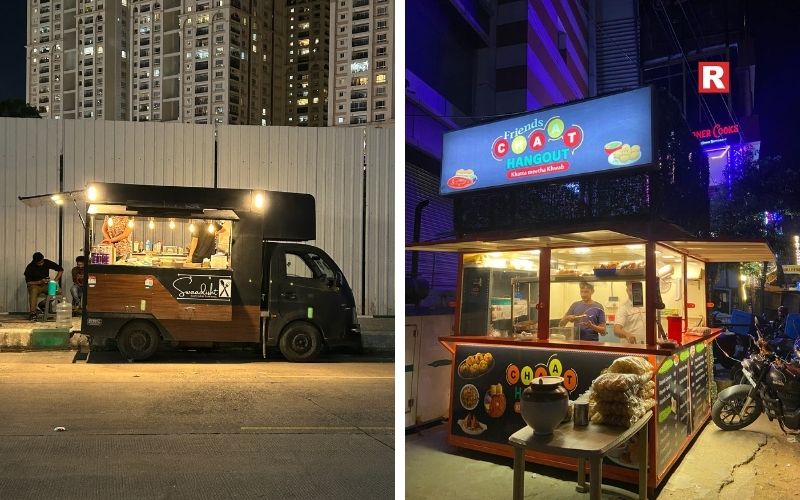
If you're in Gachibowli and hungry late at night, you're in luck! There are tons of food stalls open late serving stuff like shawarma, fried rice, momos, rolls, and grilled chicken. It's a great spot to grab a quick bite after work. The best time to go is between 9 PM and 1 AM when all the stalls are most active. The place has a lively vibe, and you usually get your food pretty fast. That makes this area a reliable option if you are looking for late-night food in Hyderabad.
Hygiene and Safety Tips
- Make sure the stall's counter is clean.
- Don't eat at places where food is left out in the open.
- Go for bottled water or drinks you know are clean.
- Choose food that's cooked fresh and hot instead of remaining unattended.
- It’s better to go when it’s not super crowded.
- See if the people serving food are wearing gloves or using clean tools.
- Check if they're reusing oil or sauces too much.
Learn more: Top Iconic Street Foods from Every Indian State You Must Try
City’s Flavors on A Plate
Hyderabad's street food is a mix of classic dishes and exciting modern flavors. Checking out the food stalls lets you feel the city's vibe. No matter if you're into light snacks, meaty meals, or sweets, every place has its own flavor. Eating here isn't too expensive, and it's fun to try new things with friends and family. When you visit these ten spots and taste different dishes, you'll get why Hyderabad's streets are such a great place to eat. Have fun, don't rush, and let each bite become a cool memory of the city.

As South Indian flavors capture international attention, two homegrown favorites, Bengaluru’s Rameshwaram Cafe and Chennai’s Namma Veedu Vasanta Bhavan, are among the latest to choose Dubai and the GCC as their launchpads for global expansion.
Indian restaurants and cuisines have long been popular abroad, but for decades, the attention was centered mostly, if not entirely, on North Indian staples like butter chicken, samosa, and naan. These dishes shaped the world’s outlook of “Indian food”, but that landscape is now evolving.
With the growing number of popular South Indian restaurant chains expanding overseas, from Saravanaa Bhavan and Anjappar to Paragon, A2B, and Sangeetha, international audiences are now discovering and appreciating the varied flavors and comfort foods of the South. And if there is one region emerging as the preferred gateway for these brands, it is unmistakably the Middle East, particularly Dubai.
If we look at the numbers, Saravanaa Bhavan alone runs 104 outlets across 21 countries, including 13 in the UAE. Anjappar Chettinad claims more than 150 outlets in 25 countries. A2B has expanded across the US, UK, Singapore, Malaysia, Canada and Australia, while Paragon continues to anchor the Malabar dining scene in the Gulf. Together, these chains run an estimated 300-350 outlets outside India.
India on Globe
In the past few years, countries like US, UK, Singapore, Dubai and other Middle Eastern cities have become a magnet for Indian F&B expansion, and South Indian brands have been leading the charge.
The trend is clearly visible in expansion plans announced by two of popular south-Indian chains: Bengaluru’s Rameshwaram Cafe and Chennai’s Namma Veedu Vasanta Bhavan revealed their international expansion plans, choosing Dubai and the GCC as their launchpads.
“I started in a very small way, from a small town near Coimbatore, with nothing more than a vision and a desire to do something different. Innovation has been my constant companion, and it is this spirit that has carried Indian food to 16 countries across the world,” mentioned M Mahadevan, Chairman, Advantage Foods Pvt Ltd who has took brands like Saravana Bhavan, Sangeetha, Hot Breads amongst other to over 16 countries, globally, all celebrating Indian cuisine.
Their timing reflects a larger pattern. The Gulf, home to over 8.5 million Indians, a significant portion from Tamil Nadu, Kerala, Karnataka, and Andhra Pradesh, offers unmatched familiarity, demand, and scalability. Indian cuisine accounts for nearly 21 per cent of the UAE’s dining landscape, and Dubai alone hosts more than 13,000 restaurants and cafés. With shorter supply chains, easier access to ingredients, flexible franchising, and a multicultural audience, the region has become the ideal first step for South Indian brands testing global waters.
Global dining preferences have also shifted dramatically. There is growing interest in regional Indian cuisines, fuelled by food shows, YouTube Street food videos, and diaspora content creators.
What Dubai as Next Location
Few restaurant chains have grown as explosively within India as The Rameshwaram Cafe, with its high-volume service model, distinct chutneys, and immense social media presence. Its announcement of a Dubai outlet marked one of the most anticipated global moves in the South Indian F&B space this year.
For the brand, Dubai was an obvious choice. “Dubai emerged as the natural choice for our first international outlet because it’s a vibrant, multicultural city with a large Indian community that deeply connects with our cuisine,” said Divya Raghavendra Rao, Managing Director and Co-Founder.
For Rao, Dubai was not simply an international market, but a gateway to the world, the first step in a larger plan. “This expansion marks the first step in our long-term vision of making The Rameshwaram Cafe a globally recognized name. We are currently exploring opportunities in Singapore, London, and the United States regions with a strong Indian presence and a growing appreciation for authentic, vegetarian Indian food,” she said.
The brand’s strategy maintains a clear balance: the authenticity of dosa, idli, pongal, and filter coffee will remain untouched, while certain formats, such as grab-and-go tiffin boxes, lighter wraps, and portion-size variations, may be introduced to suit lifestyle needs abroad.
“Our international outlets will largely retain the core menu and signature flavors that define The Rameshwaram Cafe experience. That said, we do plan a few subtle regional adaptations to suit local preferences and dining habits. We believe classics like our crispy dosas, kempu chutney, and authentic filter coffee will become our strongest ambassadors globally. They represent everything we stand for: tradition, warmth, and the unmistakable taste of home,” she added.
Chennai’s NammaVeeduVasanta Bhavan, meanwhile, approaches global expansion from a place deeply rooted in memory and emotional connection. With established presences in Singapore, Dubai, and Doha, and new outlets planned in London and Canada, the brand’s journey has been shaped by what its customers abroad missed most.
“Over the years, many of our loyal customers who moved abroad told us how much they missed the comforting flavors… that nostalgia inspired us to take our cuisine beyond borders,” reflected Managing Director Swarnalatha Ravi.
Authenticity, she said, is non-negotiable. Their international kitchens replicate traditional recipes, spice mixes, and cooking techniques exactly as in India. At the same time, the brand recognizes the need for sensitive adaptation.
“Our international menus are designed to bring the true essence of South Indian cuisine to global audiences. They largely mirror our offerings in India. But we also recognize the importance of connecting with local audiences. In every international outlet, we thoughtfully curate selective adaptations, for instance, introducing Jain-friendly options or subtle fusion variations, to cater to diverse dietary needs and regional palates,” she added.
The lesson is simple: find your market, position yourself smartly, and price right.

Puducherry (or Pondy, as the locals lovingly call it) isn't just a place to go sightseeing; it’s also a place full of delicious wonders. As Pondicherry was once a French colony, its remnants can still be seen both in its culture and food. Walk down the streets of the French Quarter, with its iconic yellow walls draped in bougainvillea flowers, and you’ll feel like walking through a colonial postcard. But the real magic happens in the kitchens, where centuries of French, Tamil, and Creole history have been slowly simmered into a cuisine that exists nowhere else on Earth.
If you’re a foodie, this charming coastal town, officially the Union Territory of Puducherry, can become your next great adventure. Forget what you think you know about South Indian or European food; this city has forged a completely new flavor profile unique to its own. From the crispiest croissants imaginable to curries that will set your palate on fire (in the best way), here are the 10 essential dishes that define the true taste of Pondicherry.
Read more: 5 Tasty Dishes from Bihar You Must Try
The Franco-Tamil Love Story: Creole Specialties
The heart of Pondicherry’s unique food lies in its Creole cuisine, which is a magnificent fusion of traditional French cooking principles and the fiery taste of Tamil spices. Do not just think of them as French dishes that are adapted, but as entirely new creations.
1. Pondicherry Fish Curry (Meen Kuzhambu)
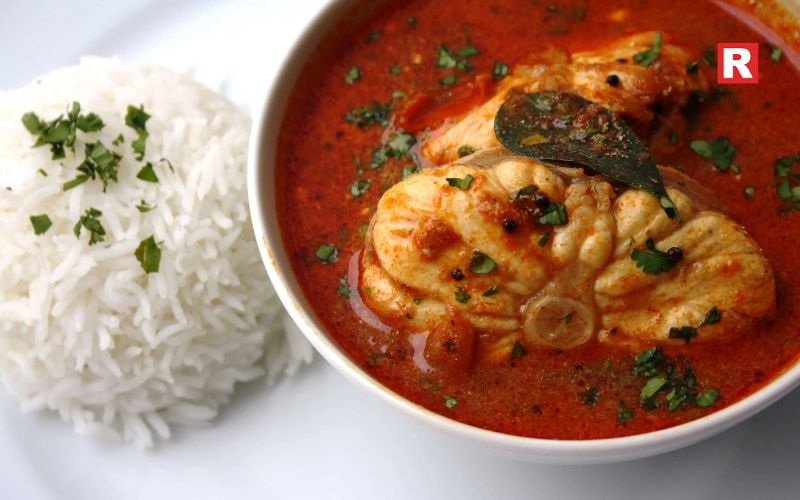
Visiting Pondy and not having this dish is a crime in itself. At first glance, this fish curry might look like a typical coastal dish, but the complexity of its flavor is miles ahead. Its gravy is a masterwork, featuring a powerful blend of tamarind’s tang and the mellow creaminess of coconut milk. A fresh, locally sourced fish (often a tender white fish, such as seer) is slow-cooked in this broth. A unique blend of Creole spices and a hint of ginger lends this dish a subtle depth that sets it apart from its Tamil Nadu counterparts. The best way to eat it is when poured generously over hot, unpolished rice.
2. Kadugu Yerra (Mustard Prawn Curry)
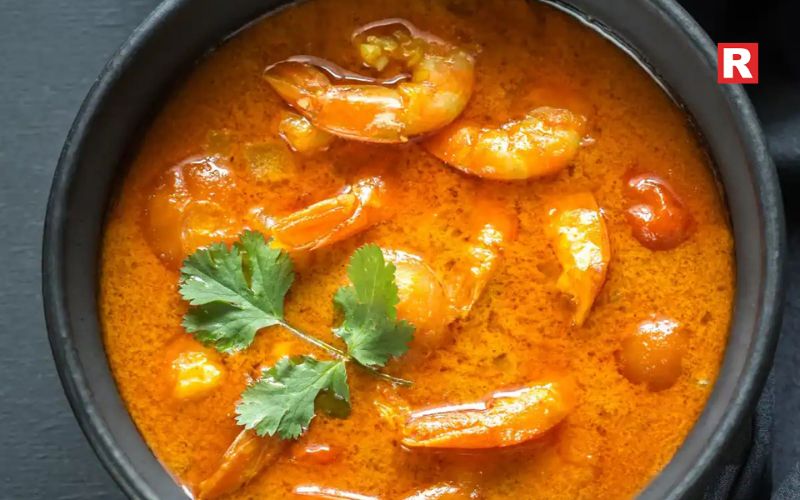
Prawn lovers, prepare to be amazed by this special pondy curry, made with fresh prawns. Kadugu Yerra translates simply to Mustard Prawn. Its name can barely hint at the utter deliciousness of the dish. This is where the French love for mustard seeds met the coastal people’s reliance on coconut. Plump, juicy prawns are cooked in a thick, fragrant gravy. The mustard seeds provide a sharp, earthy kick, which is beautifully balanced by the sweet coconut base. It is rich, comforting, and spicy enough to clear your sinuses. You can call this a perfectly executed seafood curry that makes you clean your plate.
Know more: 10 Iconic Dishes from Kashmir That Will Give You a Flavor of Paradise
From the Sea: Must-Try Coastal Catches
Puducherry’s proximity to the Bay of Bengal guarantees some of the freshest seafood imaginable, often sold directly from small fishing boats right onto the tawa or griddle.
3. Kanava Thokku (Squid Masala Fry)

This is Pondicherry's best seafood snack or side dish. Squid rings (Kanava) are prepared in a fiery, semi-dry manner in Kanava Thokku. The rings are quickly tossed and simmered in a dark, flavorful masala made from caramelized onions, chunky tomatoes, and a generous amount of local red chili powder and curry leaves. The key here is the technique: the squid is cooked just right to stay tender and springy, soaking up every bit of the intense, spicy gravy. You need to just grab a piece of parotta and scoop it up!
4. Crab Masala Fry
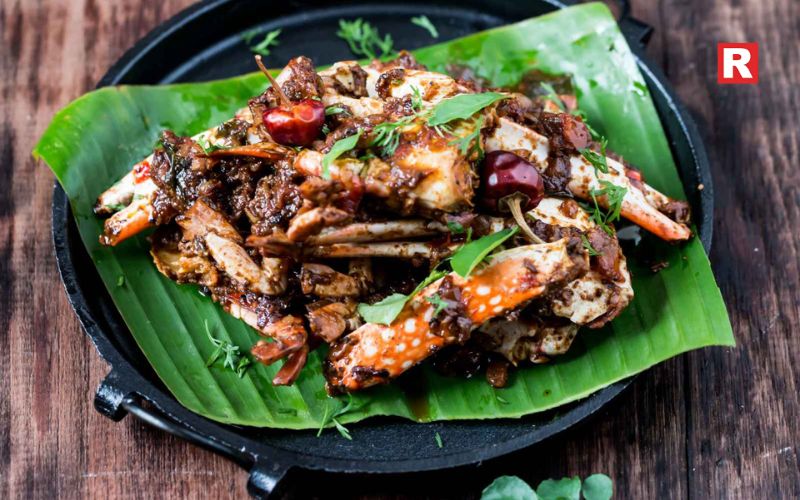
Pondy’s street food stalls and specialized seafood restaurants often showcase huge, fresh mud crabs. The best way to create crab is the local method, the Crab Masala Fry, which is fantastic because it lets the natural sweetness of the crab meat shine. The crab is marinated in a fragrant paste of garlic, ginger, turmeric, and cayenne, then fried until the shell is crispy and the meat gets juicy. To truly enjoy this delight, crack open the shells and suck out the flavorful delight. It might be messy, but this will give you an authentic Puducherry experience.
The French Connection: Pastries and Cafe Culture
You can see the most French influence in the area called the White Town. Its charm in itself is inextricably linked to its boulangeries (bakeries) and cafes, where you can instantly transport yourself to Europe.
5. Croissants, Baguettes, and Brioche
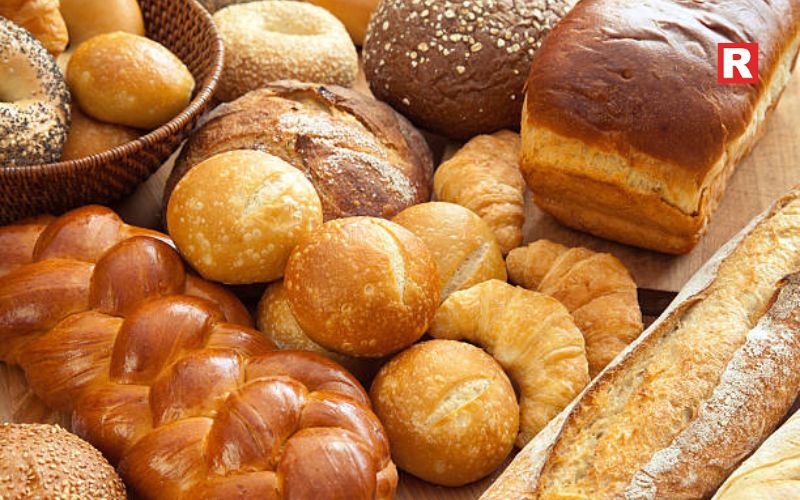
The quality of baking here is surprisingly authentic, which is a testament to its French legacy. You can easily skip breakfast at your hotel and head straight for a bakery like Baker Street or Auroville Bakery. The aroma of the cafe alone is intoxicating. Their croissants are world-class. Flaky, buttery, and perfectly layered, exactly what you’d expect from a hidden Parisian cafe. A crusty baguette with homemade jam and butter, or a slice of soft, sweet brioche, is a simple breakfast you can indulge in that feels completely appropriate here.
To enjoy a traditional Pondy breakfast, serve a plain croissant with a French press or a cup of strong South Indian filter coffee. For a more luxurious meal, try the chocolate or almond versions of the croissant.
What's new: 8 Famous Street Foods from Hyderabad You Can’t Miss
6. Crêpes (Sweet and Savoury)
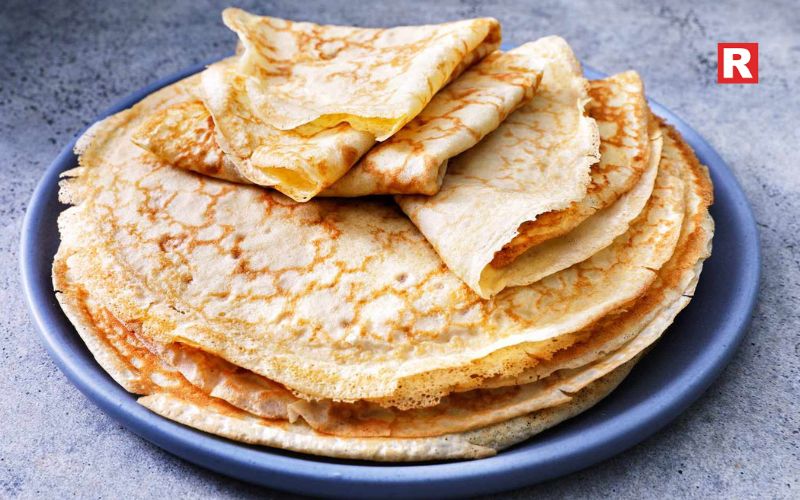
The Crêpe is Pondy's signature French snack. You’ll find them everywhere, from old-fashioned cafes to specialized stalls. For a delightful afternoon treat, try a sweet crêpe slathered in Nutella and local bananas, or perhaps a spicy one filled with cheese, spinach, and mushrooms. It's light, versatile, and wonderfully satisfying. Seeking out a cafe that serves them with a genuine French feel is part of the fun.
7. Quiche Lorraine
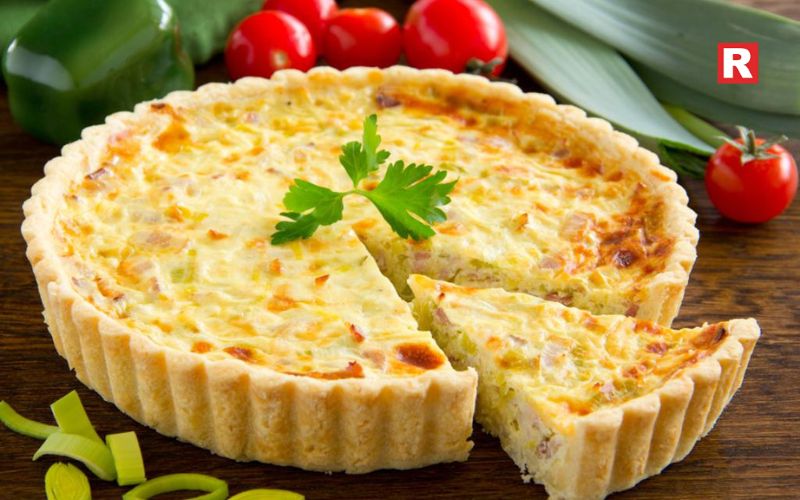
For a perfect light lunch that leans towards European cuisine, look for a local spot serving authentic Quiche. This savory egg custard baked in a flaky pastry crust comes with fillings like spinach, smoked chicken, or cheese. They are often sold in individual portions, making them ideal for a quick bite while you explore the architectural beauty of the French Quarter. The quality and freshness of the ingredients are generally superb. The sightseeing, along with this snack, will take you straight to the lands of the French.
Grounded in Tradition: Authentic Tamil Staples
Puducherry is still a deeply Tamil region beyond its vital roots to the French. Its daily cuisine is the backbone of local life, spicy, filling, and utterly delicious. These dishes are best found at the traditional local restaurants (or mess).
8. Kal Dosai with Sambar and Chutney
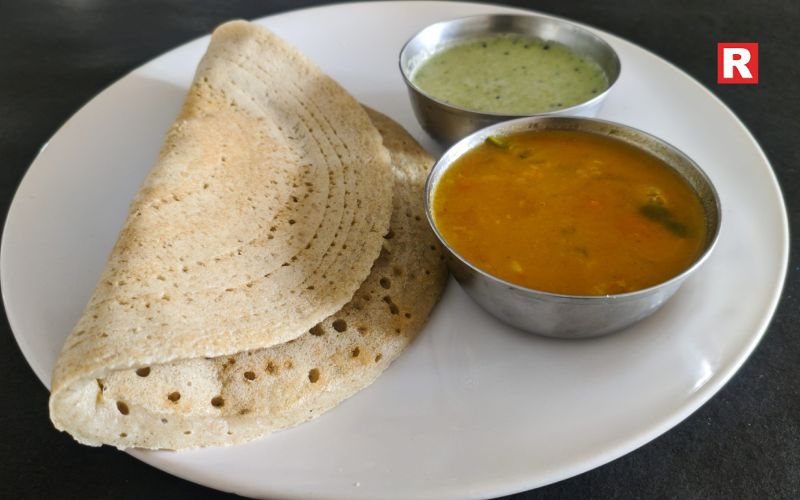
Unlike the gigantic, crispy masala dosas that stand vertically on your plate, the Kal Dosai is a softer, smaller, and slightly thicker version, similar to a soft pancake. They are made quickly on the kal (griddle) and are usually served in pairs with a generous bowl of piping hot, aromatic Sambar and a trio of fresh, vibrant chutneys (coconut, mint, and tomato/chili). This is an absolute must-try for breakfast and is also a popular tiffin item. The local versions of this dish and chutneys often use their own unique regional ingredients, making the familiar taste of the dosa a little bit new.
Check out: 10 Things You Should Know Before Eating Jolochip
Top Iconic Street Foods from Every Indian State You Must Try
9. Kothu Parotta
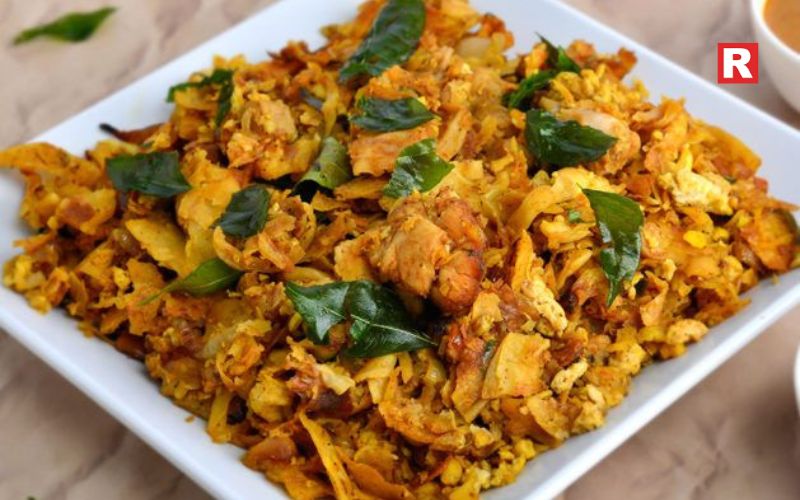
If you’re looking for an authentic and comforting street food experience here, then Kothu Parotta is the answer. As evening falls, you'll hear a distinctive rhythmic sound: the chop-chop-chop of metal on a hot griddle (a flat iron plate). That’s the making of Kothu Parotta, one of India's most satisfying street foods. It involves taking flaky, layered flatbread (parotta), shredding it, and then furiously stir-frying the pieces with meat, eggs, and a fiery, spicy masala until it becomes an irresistible mess. It's a delicious spectacle to watch and an explosion of flavor to eat.
10. Filter Coffee (Kaapi)
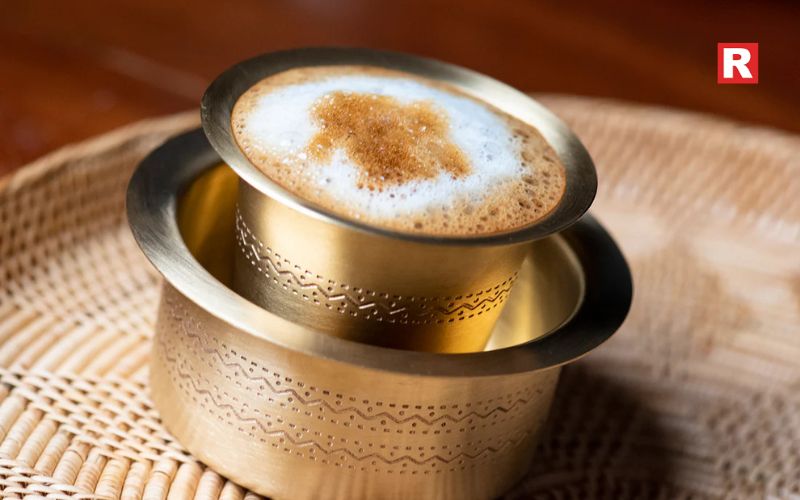
Okay, it’s not a dish, but no Puducherry culinary list is complete without mentioning the Filter Coffee. The ritual of making a perfect cup of coffee is everything: the slow drip brew, the chicory-enhanced, strong decoction, the frothing of the milk, and the final serving in the traditional davara and tumbler. It is strong, frothy, and intensely flavourful, which is the perfect caffeinated partner to a crispy vada or a soft idli. Find a bustling local restaurant, and watch the kaapi being poured from a height to create that satisfying foam.
Learn more: 10 Simple Rice Bowl Recipes For a Quick and Healthy Lunch
The Final Bite
Puducherry food is a legacy in itself. It’s a rare travel experience where you can enjoy a classic French croissant for breakfast, a flavorful Creole seafood curry for lunch, and a hearty Tamil thali (platter) as dinner all within a single day and within a few blocks of each other. The city’s food scene is a vibrant, living museum of its history. Their mixed legacy of French, Tamil, and Creole is a reason in itself to visit this charming coastal city. So pack your bags and your appetite, because Puducherry is going to take you on a culinary journey you won’t forget.

Airports are no longer just transit points; they have steadily evolved into food and beverage (F&B) hubs offering travellers a mix of dining, shopping, and experiences. For many passengers, food is often the first source of comfort in an otherwise hurried environment, making a strong F&B ecosystem an essential part of modern air travel.
A recent study by IRHPL, one of India’s fastest-growing retail groups, highlights how airport operators and food outlets are adapting by combining speed, variety, and quality to meet shifting consumer expectations. The report reveals that regional cuisines continue to dominate traveller preferences, with South Indian fare topping the charts nationwide, followed closely by North Indian offerings.
South Indian dishes remain popular with both domestic and international flyers, underscoring a tendency among travellers to opt for familiar and comforting flavours even in transient spaces like airports. Convenience-driven formats and beverages are also emerging as key contributors to sales, reflecting the dual demand for quick service and quality experiences.
Commenting on the insights, Naresh Sharma, CEO, IRHPL Group of Companies of IRHPL said, “While global fast-food chains continue to expand their footprint across airports, it is regional cuisine that still dominates menus. This highlights a crucial insight that travellers seek familiarity and cultural connection even in transit, making it essential for airports to tailor their offerings to local tastes rather than relying solely on international trends.”
Convenience driving Consumption
Travellers are increasingly opting for quick-service formats over traditional dine-in meals at airports, according to recent trend data. Between 50–65% of overall F&B spending is directed towards grab-and-go counters and convenience-led outlets, while dine-in restaurants account for just 25–35%.
The preference is especially strong among short-dwell passengers, who often prioritize speed and efficiency but still seek quality in their food choices. The findings underscore how convenience continues to shape consumption patterns in airport dining.
“Seeing the travellers’ preferences, airports have already responded with investments in quick-service outlets, kiosks and pre-packaged offerings, ensuring that travellers can enjoy fresh, tasty meals even with limited time before flights.”
Beverages Driving the Sales
Interestingly, beverages are driving the F&B sales at airports, surpassing food in contribution. Nearly 70% of airport F&B revenue comes from beverages such as coffee, juices and alcohol, while the remaining 30% accounts for food. Specialty beverages such as craft coffee and premium bars contribute 10–15% of sales, while lounges and areas for high-dwell times in premium hubs record the highest share. This trend showcases the potential of beverage-focused outlets to drive both footfall and revenue that complement quick-service food formats.
Travellers Sensitive to Pricing
Airports provide the convenience and environment that justify a premium spend on food and beverages, but travellers remain price-conscious, according to industry insights. The steady rise in airport F&B sales suggests that passengers are willing to pay slightly more for quality meals in comfortable settings, provided there is value attached.
This has led operators and F&B partners to focus on a balanced approach—combining accessible grab-and-go counters with premium dining concepts to capture a wider customer base.
Data also points to a clear hierarchy in food choices, with South Indian cuisine leading demand, followed by North Indian offerings. With grab-and-go formats dominating consumption, airports are prioritizing investments in quick-service outlets, while also expanding premium dining options to cater to short-dwell and high-spend travellers alike.
As airports evolve into culinary destinations, aligning offerings with traveler behavior will remain key to optimizing both experience and revenue.

People in Kerala love Beetroot Pachadi, especially during Onam Sadya and other holidays. This colorful dish is a great side dish for rice because it has the sweetness of beetroot, the tang of yogurt, and the smell of coconut. There are small differences in the recipes depending on where you live. For example, there is the Malayalam style Beetroot Pachadi recipe, the Andhra style Pachadi, and even versions without coconut.
This guide has everything you need to know about Beetroot Pachadi, from a simple recipe to its health benefits and different ways to make it.
What Exactly is Beetroot Pachadi?
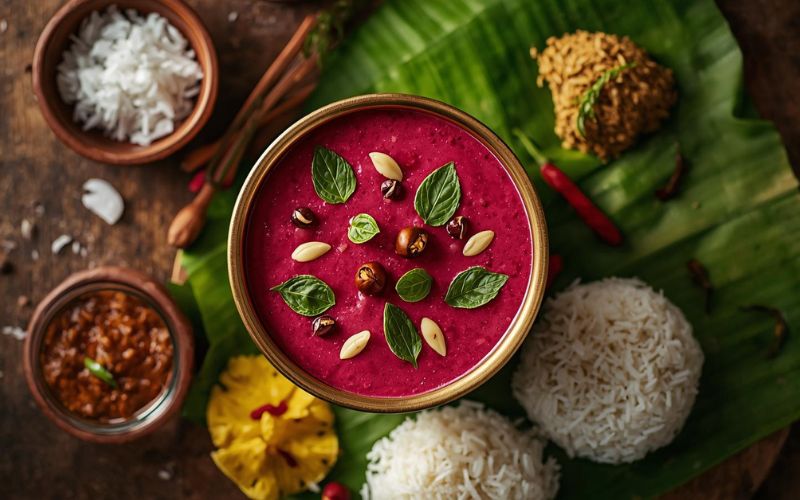
Beetroot Pachadi is a South Indian dish that is similar to raita. It is made by mixing cooked beetroot with a paste made from ground coconut and mustard and then mixing it with curd (yogurt). Adding curry leaves, mustard seeds, and dry red chilies to the dish gives it a tasty finish.
Pachadi tastes different from the usual North Indian beetroot raita because it has coconut and curry leaves in it.
Also read: Kootu Curry Recipe
Ingredients for Beetroot Pachadi (Malayalam Recipe)
Here is a list of the usual ingredients used in a Malayalam recipe for beetroot pachadi:
- 2 medium beetroots, grated or finely chopped
- ½ cup grated fresh coconut
- 2–3 green chilies
- 1 tsp mustard seeds
- 1 small piece ginger
- 1 cup thick curd (yogurt)
- ½ tsp turmeric powder
- 1–2 dried red chilies
- 1 sprig curry leaves
- 2 tsp coconut oil
- Salt as needed
Step-by-Step Beetroot Pachadi Recipe
- To cook the beetroot, put grated beetroot, turmeric, salt, and a little water in a pan. Cook until soft.
- Make the paste out of coconut – With a little water, grind the grated coconut, green chilies, ginger, and half of the mustard seeds into a smooth paste.
- Mix with beetroot: Stir this paste into the cooked beetroot and let it simmer for 2–3 minutes.
- Mix in some yogurt after the mixture has cooled down a bit.
- To make tempering, heat coconut oil and add mustard seeds, curry leaves, and dry red chilies. Add this to the pachadi.
- Serve: As part of a Sadya meal, Beetroot Pachadi is ready to be served with steamed rice.
Beetroot Pachadi Variations
- Beetroot Pachadi without Coconut: For a lighter version, mix cooked beetroot with curd, salt, and a tempering of mustard and curry leaves instead of coconut paste.
- Andhra Beetroot Pachadi is spicier than other styles. It has a sour taste because it uses tamarind pulp and red chilies instead of Kerala style.
- If you're short on time, just cook the beetroot, mix it with curd, and add a quick tempering. You don't need to grind anything.
- Pineapple Pachadi is a festive version made with pineapple instead of beetroot. It is also very popular in Kerala Sadya.
Also read: Sattu Paratha Recipe
Health Benefits of Beetroot Pachadi
Beetroot Pachadi is not only delicious but also highly nutritious:
- Rich in Iron & Folate: Helps in improving blood circulation and preventing anemia.
- Gut-Friendly: Yogurt provides probiotics that support digestion.
- Low-Calorie Side Dish: Makes it ideal for health-conscious eaters.
- Detox Friendly: Beetroot aids in liver detoxification.
- Heart Health: Coconut oil and curry leaves add good fats and antioxidants.
So, if you’re asking “Is beetroot pachadi good for health?” – the answer is a big yes. It’s a wholesome dish that balances taste and nutrition.
Pro Tips to Make Perfect Beetroot Pachadi
- Use thick curd every time to keep the pachadi from getting watery.
- Don't add curd to the beetroot mixture while it's still hot. Let it cool down a bit first to keep it from curdling.
- Use coconut oil to temper the food; it brings out the real Kerala flavor.
- Add green or red chilies to change the heat level to your liking.
- If you want a smoother texture, grate the beetroot; if you want a chunkier pachadi, chop it up.
What Goes Well with Beetroot Pachadi?
The best things to eat with beetroot pachadi are:
- Avial, Erissery, Parippu Curry, and Rice are some of the Kerala Sadya dishes.
- Steamed rice with sambar or rasam is easy to make.
- You can also eat it as a side dish with chapati or dosa.
One of those dishes that instantly brings the tastes of Kerala to your plate is Beetroot Pachadi. If you like South Indian food, you have to try this pachadi. It comes in three different styles: the traditional Malayalam style, a simple style without coconut, and a spicy Andhra style.
Beetroot Pachadi is a great dish to make for a special occasion or to add some color and health to your thali.

Kootu Curry, or Koottukari, is more than just another vegetarian curry. It's a key part of Kerala's Onam Sadya and other festive meals. This dish is known for its hearty texture and comforting flavors. It combines legumes like black chana (kadala) or Bengal gram with vegetables grown in the area, like yam, ash gourd, raw banana, or pumpkin. The roasted coconut base of Kootu Curry is what makes it stand out. It has a nutty, fragrant flavor that is very Kerala.
Every part of Kerala has put its own spin on Kootu Curry, from the Brahmin homes in Palakkad to the feasts in Kannur and the kitchens in Malabar. This makes it one of the most flexible dishes in Kerala cuisine.
Also Read: Sattu Paratha Recipe
The Story Behind Kootu Curry
Food is very important to Kerala's culture and celebrations. The big Sadya meal served on banana leaves during Onam has more than 20–25 dishes, and Kootu Curry is always the main dish. Kootu Curry is different from the light stews and yogurty curries in the spread because it has a strong, earthy flavor from the mix of roasted coconut, black pepper, and curry leaves.
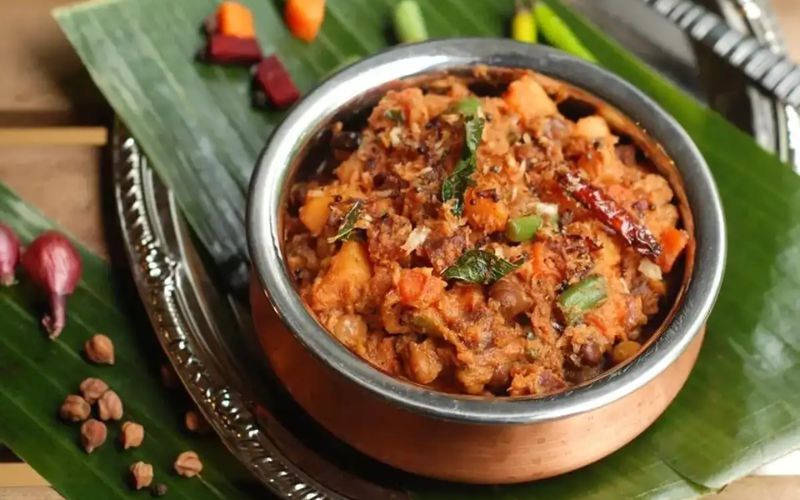
The recipe is passed down from generation to generation in many families. The Palakkad style is simpler and has a hint of coconut, while the Kannur style is stronger, spicier, and has more roasted coconut. The Brahmin version doesn't use onions or garlic, so it's a sattvic dish.
Ingredients in Kootu Curry
A normal Kerala-style Kootu Curry recipe calls for:
- Legumes: Bengal gram or black chickpeas (kadala) soaked overnight and then cooked under pressure
- Yam, raw banana, ash gourd, or pumpkin (often in combination) are some of the vegetables.
- Turmeric, black pepper, red chili powder, green chilies, and curry leaves are some of the spices used.
- Coconut base: Freshly grated coconut roasted with cumin and chilies until golden brown, then ground into a paste.
- Coconut oil, mustard seeds, curry leaves, and dried red chilies are used to temper.
The end product is a thick, mildly spicy curry that tastes great.
Step-by-Step Kootu Curry Recipe (Kerala Style)
- Cook the legumes – Pressure cook soaked black chickpeas or Bengal gram until tender.
- Prepare vegetables – Dice yam, raw banana, or pumpkin into medium cubes. Cook until soft but not mushy.
- Roast and grind coconut – In coconut oil, roast grated coconut with green chilies and cumin until golden brown. Grind into a coarse paste with little water.
- Mix everything – Add the cooked vegetables and legumes together in a pot, stir in the coconut paste, and simmer until flavors meld.
- Temper to finish – Heat coconut oil, splutter mustard seeds, toss in dried red chilies and curry leaves, and pour over the curry.
- Serve hot – Kootu Curry is best served with steamed rice, Kerala matta rice, or as part of a traditional Sadya meal.
Regional Variations of Kootu Curry
Kootu Curry is still popular with foodies because it comes from many different regions. The basic ingredients of the dish are still the same: legumes, vegetables, and roasted coconut. However, each community in Kerala has added its own special touch. Let's take a closer look at the most popular styles:
1. Kootu Curry in the Style of Palakkad
The Palakkad area, which is next to Tamil Nadu, has a cuisine that is heavily influenced by both Kerala and Tamil Brahmin traditions. Compared to northern Kerala styles, the Palakkad version of Kootu Curry is not as spicy or hot. The focus is on how naturally sweet yam, pumpkin, or raw banana is when mixed with freshly ground coconut. The coconut here is only lightly roasted, which means it smells good but doesn't change color. This is different from the Kannur version. This makes it lighter and more sattvic, and it is often served at temple feasts and religious ceremonies.
2. Kootu Curry in the Brahmin Way
The Brahmin community makes Kootu Curry as a sattvic dish, which means it doesn't have any onions or garlic and usually has fewer spices. You have to have black chickpeas (kadala) and roast the coconut slowly. The dish tastes earthy but not spicy because it has pepper, cumin, and curry leaves in it. This version shows how the Brahmins value food that is soulful, healthy, and easy to digest. They often make it for special occasions like weddings and pujas.
3. Kootu Curry in the Style of Kannur
The Kannur version is very spicy, bright, and bold. Roasting the coconut until it is golden brown or even deep brown gives the curry a strong, nutty flavor. A lot of black pepper is used, sometimes even more than chili powder, which gives it a sharp kick. The Kannur style is richer and heartier because it comes from the coast, where strong flavors are preferred. This version is a must-have at big Onam feasts in northern Kerala, where food is celebrated with lots of flavor and plenty of it.
4. Recipe for Malabar Kootu Curry
The Malabar region, which includes Kozhikode, Kannur, and parts of northern Kerala, has its own unique version of Kootu Curry. The food here is more festive and rich. Cooks can add pumpkin or ash gourd for sweetness along with the usual yam and banana. Frying coconut until it is deep golden and smells good makes a rich base for the curry. A little bit of jaggery syrup is sometimes added to balance the flavors. This gives the dish a slightly sweet taste that goes well with other Sadya dishes. People like the Malabar style for weddings and big family meals because it shows that they are welcoming.
Why Restaurants Should Feature Kootu Curry
Authentic Kerala Touch – No Sadya or festive South Indian thali feels complete without Kootu Curry. Adding it to your restaurant’s menu brings cultural depth and authenticity.
Healthy and Vegan – Naturally plant-based, rich in protein from legumes, and cooked in coconut oil, this curry is a hit with health-conscious and vegan diners.
High Demand During Festivals – Onam, Vishu, and weddings see a surge in demand for traditional Kerala dishes, with Kootu Curry often being a must-have in catering menus.
The Kootu Curry Kerala style recipe is more than just a taste; it also has the cultural essence of Kerala's festivals, traditions, and community feasts. From Palakkad to Kannur, each region has its own food story to tell. For people who cook at home, it's comfort food. For restaurant owners, it's a crowd-pleaser that can make a holiday menu better.
Don't forget to include Kootu Curry in your next Kerala feast. It's a dish that honors the balance of flavor, health, and tradition.

Onam is one of India’s most loved harvest festivals. It is celebrated with joy, flowers, music, and of course, food. At the heart of the celebration lies the Onam Sadya — a grand vegetarian feast served on a banana leaf. This meal is more than food. It is a tradition that speaks of abundance, unity, and cultural pride.
Every year, families in Kerala prepare a Sadya at home with more than 25 dishes. But today, the experience has gone beyond Kerala. Hotels, restaurants, and delivery kitchens across India now serve their own versions of Sadya. From luxury buffets in five-star hotels to homely thalis from Kerala kitchens, the festival has spread to every corner of the country.
This year, you can join the celebration with 41 unique Sadya menus across India. Let’s explore where you can find them and why this meal is so special.
Read more: 10 Different Types of South Indian Rice Dishes
12 Delicious High-Protein Foods to Eat Daily for a Healthier You
What Makes Onam Sadya Special?
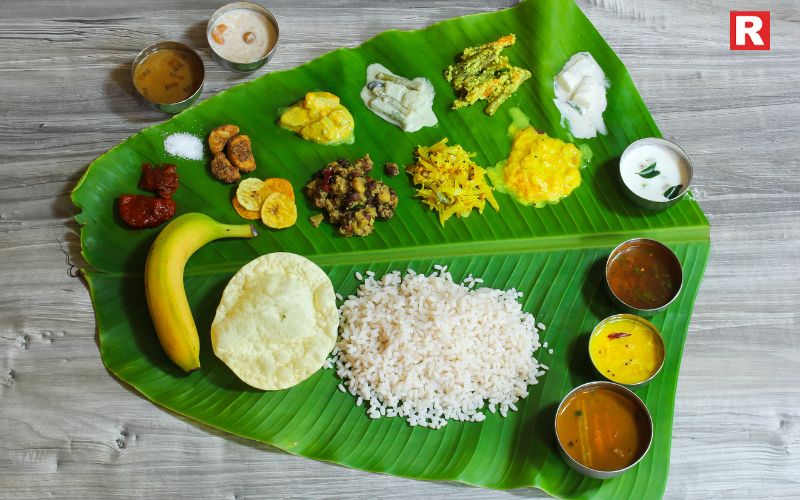
Sadya means “banquet” in Malayalam. Traditionally, it includes between 26 and 30 dishes. Each dish has its place on the banana leaf. The meal is eaten with hands, and the order of serving is fixed.
The beauty of Sadya lies in balance. The mix of sweet, sour, salty, and spicy dishes makes it wholesome. A Sadya usually includes:
Rice served with sambar, rasam, and curries
Rice is the heart of the Sadya. It is always served with sambar, rasam, and light curries. The rice balances every flavor on the banana leaf. Each spoonful brings together tangy, spicy, and earthy notes. This simple grain turns into a grand experience when paired with so many dishes.
Avial, made with vegetables and coconut
Avial is one of the most loved dishes in Sadya. It is made with fresh vegetables like beans, carrots, and drumsticks. Grated coconut and curry leaves add flavor. The dish is light, healthy, and colorful. It shows the beauty of Kerala cooking, where vegetables and spices blend in harmony.
Olan, cooked with ash gourd and coconut milk
Olan is a mild and gentle dish in Sadya. It is cooked with ash gourd and red beans in coconut milk. The taste is soft and soothing. It balances the stronger flavors on the banana leaf. Olan represents the calm side of Kerala food, rich yet very delicate in flavor.
Erissery, made with pumpkin or yam
Erissery is a traditional dish that combines pumpkin or yam with coconut. The vegetables are cooked until soft and then mixed with a fragrant coconut paste. A topping of fried coconut gives it crunch. It has a sweet and earthy taste. Erissery adds warmth and comfort to the Sadya spread.
Banana chips and pickles
Banana chips and pickles are small yet important parts of Sadya. The chips are fried in coconut oil, giving them a crisp bite. Pickles, often made with mango or lime, bring tang and spice. Together, they awaken the taste buds. They prepare the eater for the bigger dishes ahead.
Payasam, the sweet dish that completes the meal
Payasam is always the last and most loved dish in Sadya. It is made with rice, milk, or jaggery. Some versions use vermicelli or lentils. It is rich, creamy, and sweet. Payasam is served in generous portions. It marks the end of the meal and leaves everyone full and happy.
Know more: These 7 Foods Can Help You Cool Your Stomach in Summer
Find Onam Sadya Menus Across India
Here are 41 places across India where you can enjoy an authentic or innovative Sadya this Onam.
Bangalore
- Ente Keralam – Known for its traditional Sadya with 28 dishes, including ada pradhaman and parippu payasam.
- Kappa Chakka Kandhari – Offers a mix of traditional Sadya and modern Kerala flavors. Pre-booking is a must.
- The Paul Hotel – A luxury Onam buffet with live counters and multiple payasam varieties.
- Nandhana Palace – Their Sadya focuses on homely, simple dishes at an affordable price.
Chennai
- Dakshin, Crowne Plaza – Famous for its premium Sadya thali with classic Kerala flavors.
- Benjarong – A Thai restaurant that does a Kerala special Sadya during Onam.
- Savya Rasa – Combines dishes from different South Indian states along with Sadya.
- Kerala Mess – Known for authentic home-style Sadya at pocket-friendly prices.
Delhi NCR
- Mahabelly, Saket – A go-to spot for Kerala food lovers. Their Onam Sadya is among the most popular in Delhi.
- Carnatic Cafe – Offers a mix of Karnataka and Kerala dishes with a Sadya touch.
- The Suryaa, New Friends Colony – A grand buffet-style Sadya with over 30 dishes.
- Delivery by Naivedyam Cloud Kitchen – For those who want Sadya at home, this option is convenient.
Mumbai
- Just Kerala, Andheri – Known for its banana leaf service and authentic Kerala flavors.
- Hotel Deluxe, Fort – A local favorite for Sadya in the city. Affordable and traditional.
- JW Marriott Juhu – Offers a luxury buffet with a modern twist on Sadya.
- Taste of Kerala, Crawford Market – Old-school Kerala restaurant serving Sadya during the festival.
Hyderabad
- Ulavacharu – Mixes Andhra flavors with Onam Sadya for a unique taste.
- Kochi Kitchen, Marriott Hotel – Offers a wide spread of Kerala dishes in a festive buffet.
- Kerala Kitchen, Banjara Hills – Home-style Sadya with payasam combinations.
- The Fisherman’s Wharf – Combines seafood with traditional Sadya for fusion lovers.
Pune
- Kerala Café – Famous for its homely Sadya experience.
- Greenlands Kerala Restaurant – Affordable and authentic Sadya thali.
- JW Marriott Pune – Five-star luxury buffet with Sadya highlights.
- Hotel Malabar – Popular for its simple yet complete Sadya.
Kolkata
- Santa’s Fantasea – Serves Kerala dishes with a Bengali touch.
- Banana Leaf – One of the oldest South Indian restaurants in the city. Offers Sadya during Onam.
- ITC Sonar – Premium Sadya experience in a festive buffet.
- Kerala Food House – Budget-friendly Sadya options.
Also check: 10 Must-Try Gujarati Dishes That Will Delight Your Taste Buds
Goa
- Mum’s Kitchen – Known for seasonal Onam specials.
- Kerala Café Goa – Homely Sadya with payasam varieties.
- Vivanta Goa – Luxury Sadya spread with over 25 items.
Ahmedabad
- Annalakshmi – Famous for traditional South Indian feasts, including Sadya.
- Swad Kerala Restaurant – Authentic Sadya with banana leaf service.
- The Grand Bhagwati – Hosts special Onam buffets.
Kerala
- Paragon, Kozhikode – Legendary restaurant known for Sadya during Onam.
- Ariya Nivas, Thiruvananthapuram – Classic Sadya with more than 30 dishes.
- Malabar Junction, Kochi – Sadya with a fine-dining twist.
- Hotel Sree Krishna, Thrissur – Affordable and widely loved for its Sadya.
Other Cities
- Kerala Mess, Jaipur – Serving homely Sadya in Rajasthan.
- Sadhya by Kerala House, Lucknow – Brings Kerala flavors to the north.
- Kerala Kitchen, Chandigarh – Small outlet known for Onam specials.
Why Sadya Is Popular Outside Kerala
Regional food is gaining importance across India. People want to explore culture through food. Sadya offers a unique chance to experience Kerala’s hospitality and heritage.
Hotels and restaurants are also innovating. Some offer vegan Sadya options. Others bring fusion with seafood or local flavors. Delivery platforms now make it possible to enjoy Sadya at home.
Check more: Six Benefits of Starting Your Day with Okra Water
Top 10 Health Benefits of Eating Dry Fruits Daily
Top 7 Food Safety Practices Every Restaurant Should Follow
Tips to Enjoy Onam Sadya
- Always eat with your hands. It enhances the taste.
- Start from the top left of the banana leaf with salt and pickles. Move clockwise.
- Taste every dish in small portions. The joy lies in balance.
- End with payasam. Many places serve two or three varieties.
Happy Onam!
Onam is more than a harvest festival. It is a time that celebrates togetherness, prosperity, and joy. The grand feast called Sadya brings these feelings to life. Traditionally served on a banana leaf, Sadya is a spread of many dishes, each adding its own taste and meaning. Today, one does not have to be in Kerala to enjoy this experience. From Bangalore to Delhi, from Mumbai to Kolkata, restaurants, hotels, and home kitchens are serving special Onam menus. Some offer lavish buffets in luxury hotels, while others bring homely flavors through small eateries and delivery kitchens. Each menu keeps the spirit of Onam alive in its own way. This year, 41 Sadya menus across India are inviting people to celebrate. Every bite tells a story of tradition and culture. Onam is about sharing food and happiness, and Sadya makes that story complete for everyone who joins the table.

South Indian food is one of the most flavourful cuisines in the world. It is known for its balance of taste, aroma, and texture. Whether you visit Tamil Nadu, Kerala, Karnataka, Andhra Pradesh or Telangana, there is one thing that ties these regions together. It is the use of a few simple ingredients that make every dish stand out.
When you think about South Indian food, you probably remember the soft idlis, crispy dosas, tangy sambar, and spicy chutneys. Behind these dishes, six ingredients do most of the magic. These ingredients are part of daily cooking in almost every home in South India. Every morning started with the smell of curry leaves in hot ghee and the sound of mustard seeds spluttering in a pan. These are not just ingredients. They are a part of culture and tradition. Let us look at six of the most common ingredients that are used in South Indian cooking and why they are so important.
Read more: 12 Delicious High-Protein Foods to Eat Daily for a Healthier You
High Protein Indian Meals You Should Try
1. Curry Leaves – The Fragrant Green Gold
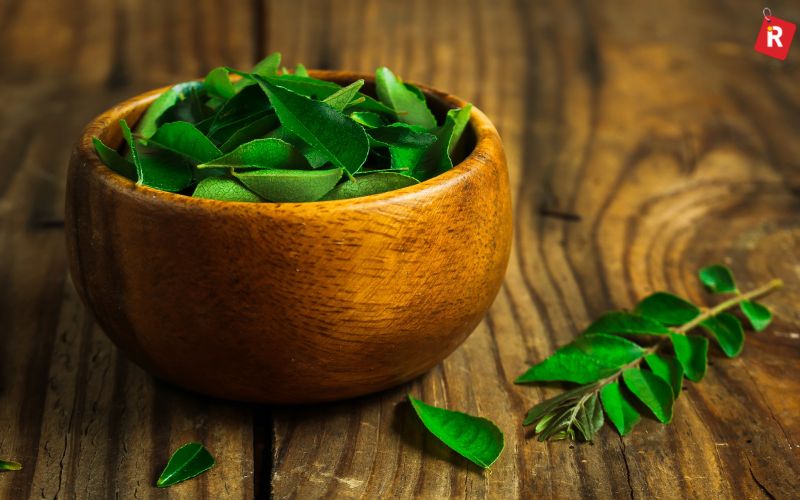
If there is one ingredient that gives South Indian food its special aroma, it is curry leaves. No sambar, rasam, or upma is complete without a handful of fresh curry leaves. Curry leaves are small green leaves with a strong, refreshing fragrance. They are usually fried in ghee or oil at the start of cooking. This step releases their natural oils and gives a rich flavour to the whole dish. Apart from their taste, curry leaves are full of health benefits. They are rich in antioxidants and are believed to help with digestion. Many families grow curry leaf plants in their backyard so that they always have fresh leaves. In most South Indian homes, the sound of curry leaves crackling in hot oil marks the start of a meal.
2. Tamarind – The Tangy Twist
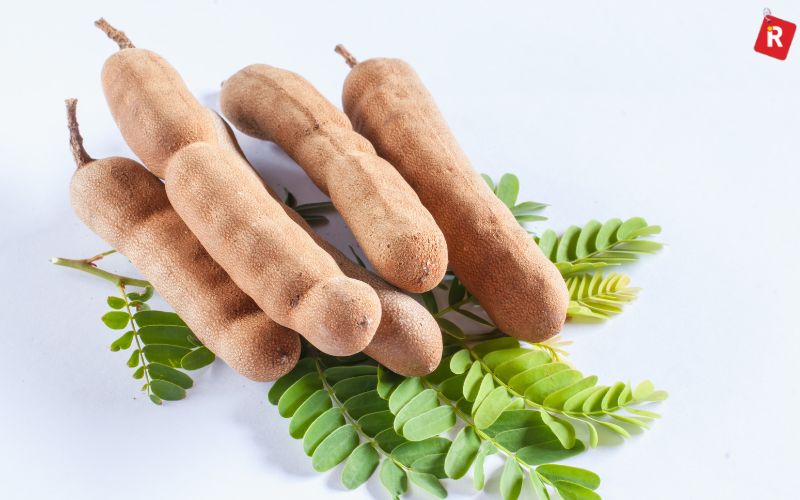
Tamarind is the ingredient that gives South Indian food its tangy taste. The pulp of tamarind is used in dishes like sambar, rasam, puli kuzhambu, and chutneys. It adds a sharp sourness that balances the spices. In Andhra Pradesh, tamarind rice or pulihora is a very popular dish. The mix of tamarind pulp, rice, green chilies, and curry leaves makes a meal that is both simple and full of flavour. Tamarind has been used in South India for centuries. The big tamarind trees can still be seen in villages. People collect the fruit during the season, dry it, and store it for the whole year. Tamarind is also a natural source of vitamins and minerals. This ingredient proves how important sourness is in balancing the taste of South Indian food.
Know more: Different Types of South Indian Rice Dishes
3. Mustard Seeds – The Tiny Flavor Bombs

Mustard seeds may be small, but they play a very important role in South Indian cooking. They are always added to hot oil before any other ingredient. When the seeds start to splutter, they release a nutty and slightly pungent flavour. This method is called tempering or tadka. After mustard seeds, other spices like cumin seeds, curry leaves, and dried chilies are added. This tempering is then poured over sambar, rasam, or even chutney. Apart from taste, mustard seeds are known for their health benefits. They help in digestion and add a unique depth to simple food. In many homes, no dish is served without a final touch of mustard seed tempering.
4. Coconut – Creamy, Sweet, and Versatile
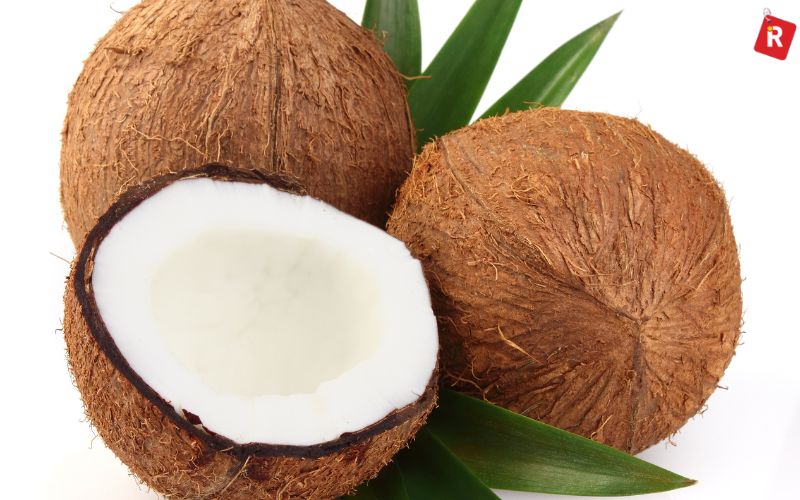
Coconut is a key ingredient in South Indian cuisine. It is used in different forms. You will find grated coconut, coconut milk, and even coconut oil being used in daily cooking. In Kerala, coconut is almost a part of every dish. Vegetable curries are made with coconut paste. Fish curries are cooked in coconut milk. Coconut oil is the preferred medium for cooking. Coconut adds a mild sweetness and a creamy texture to dishes. It balances the heat from spices and brings a smooth finish. Coconut trees are called Kalpavriksha in Sanskrit, which means the tree of life. Every part of the tree is useful. That is why it has such an important place in South Indian kitchens. Even in other southern states like Karnataka and Tamil Nadu, coconut chutney is served with idli, dosa, and vada almost every day.
Also check: Top 5 States With the Spiciest Food in India
5. Red Chilies – The Heat and Color Factor
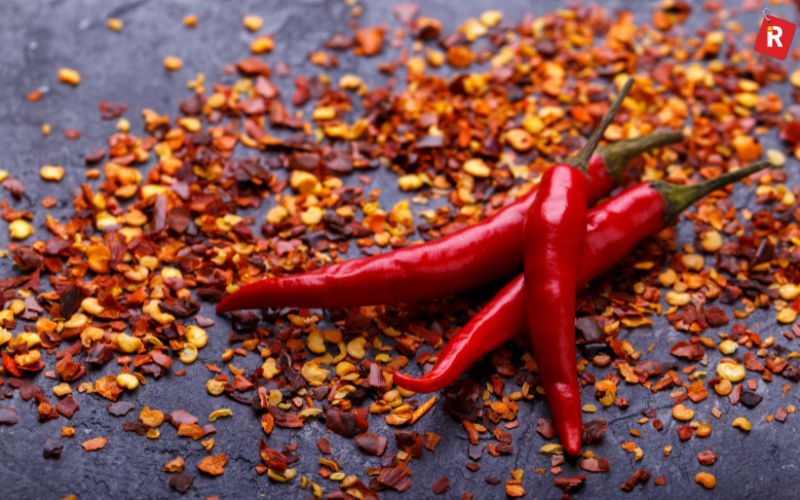
South Indian food is known for its bold and spicy flavours. Red chilies are the main reason for this heat. Dried red chilies are used in tempering, while ground red chili powder is used to make spice mixes and curry bases. Different states in South India use different varieties of red chilies. The Guntur chilies from Andhra Pradesh are very famous for their bright red color and intense heat. Byadgi chilies from Karnataka give a deep red color without being too spicy. These chilies not only make the food spicy but also give a beautiful color that makes the dishes look vibrant. For many people, a South Indian curry without red chilies would feel incomplete.
6. Lentils – The Comforting Core
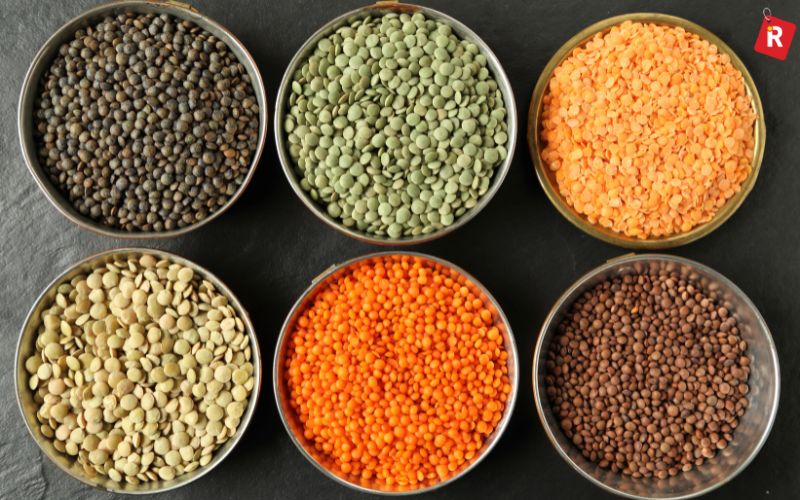
Lentils, also called dal, form the heart of many South Indian dishes. They are the base for sambar, rasam, kootu, and even some chutneys. Different types of lentils are used. Toor dal (pigeon pea) is the most common. Urad dal (black gram) is used in making dosa and idli batter. Moong dal (green gram) is used for light curries. Lentils are rich in protein, making them an important source of nutrition for vegetarian diets. They also add a soft and creamy texture to dishes. In South Indian homes, a meal with rice, sambar made with lentils, and a vegetable curry is a daily comfort food.
How These Ingredients Work Together
South Indian cooking is not just about spice. It is about balance. Curry leaves bring freshness. Tamarind gives sourness. Mustard seeds add depth. Coconut adds creaminess. Red chilies give heat and color. Lentils make the food wholesome.
Together, they create a perfect mix of tastes—spicy, sour, nutty, and sometimes sweet. These ingredients have been part of South Indian kitchens for generations. Recipes are passed down from mothers and grandmothers. Even with modern cooking methods, these six ingredients remain unchanged.
Check more: 10 Superfoods That Will Supercharge Your Diet & Make You Feel Like a
What Happens When You Consume 1 Avocado Daily?
7 Protein-Rich Vegan Foods That Pack a Punch – No Meat, No Problem!
Final Thoughts
South Indian food is simple yet full of taste. It uses a few key ingredients to make many dishes. These dishes are loved in India and across the world. Each meal is a mix of taste, aroma, and tradition. Curry leaves, tamarind, mustard seeds, coconut, red chilies, and lentils are part of daily cooking. These six ingredients make the food special. They give a balance of sour, spicy, creamy, and fresh flavours.
Every dosa, idli, rasam, and sambar carries their taste. These flavours remind people of family and home. In many South Indian homes, the smell of curry leaves and mustard seeds in hot oil starts the day. Simple food made with care has a charm that never fades. These basic ingredients have stayed the same for generations. They keep the food close to its roots and make every bite warm and comforting.

The monsoon brings a special kind of magic to South India. The skies turn grey, the roads get misty, and the trees shimmer in fresh shades of green. The air smells of wet earth, spices, and brewing filter coffee. It’s a season that invites you to pause, breathe deeply, and savour every moment. And with Bakrid just around the corner, there’s even more reason to step out. The festive weekend is the perfect excuse to go on a short getaway, explore new places, and share warm, comforting meals with the people you love. South India, with its rich culinary roots and scenic beauty, offers a truly unmatched experience during this time. Whether you’re dreaming of a spicy Chettinad lunch, a coastal seafood thali, or a cozy brunch in a rain-drenched courtyard, we’ve got you covered.
These five handpicked restaurants don’t just serve great food — they serve it with a view, with warmth, and with the perfect touch of monsoon charm. Let the journey (and the feast) begin. Here’s where you should head this monsoon and Bakrid weekend in South India.
Read more: Cloud Kitchen vs. Traditional Restaurants: Which is More Profitable?
Restaurant vs. Café: What Truly Sets Them Apart?
1. The Bangala, Karaikudi – A Taste of Chettinad Heritage

Karaikudi in Tamil Nadu becomes peaceful and beautiful during the rains. It’s a sleepy town with grand Chettinad mansions and rich food traditions. At the centre of this experience is The Bangala, a heritage hotel with a restaurant that serves some of the best Chettinad food in the country. The menu is all about bold flavours. Try the chicken Chettinad, mutton kola urundai (meatballs), and fish curry. The rice dishes here, especially their biryani, are comforting and full of spice. Every dish is made in traditional style using local spices, coconut, and ghee. The dining area is inside a 100-year-old bungalow with open courtyards and antique furniture. It feels like stepping into someone’s home. During the rains, the ambience becomes extra special. You’ll hear the sound of rain on the roof while eating something hot and spicy — a feeling that’s hard to beat.
- Perfect for: Slow travel lovers, history buffs, and spice fans.
2. Paragon, Calicut – Biryani, Seafood & Coastal Vibes

If you love biryani, Paragon in Calicut (Kozhikode) should be on your list. It’s a local legend that’s been serving Malabar food since 1939. People come from all over Kerala just to eat here. Their biryani is soft, fragrant, and not too spicy. It’s made with short-grain rice and layered with meat or fish. Try the prawn biryani or the beef biryani. You should also taste their Meen Pollichathu (fish wrapped in banana leaf) and Chicken Varattiyathu (dry-fried chicken in spices). Paragon gets busy during Bakrid weekend, so make sure you plan early. The rains only add charm to Calicut’s coastal roads. Imagine finishing a heavy biryani lunch and then heading for a drive along the beach in light drizzle. That’s what monsoon memories are made of.
Perfect for: Biryani fans, seafood lovers, and road-trippers.
3. Raintree at Taj Savoy, Ooty – Fireplaces, Fusion & Fog

If you want a monsoon break in the hills, Ooty is your best pick. The drive up the hills is green and misty, and the weather stays cool. Inside the Taj Savoy Hotel, you’ll find Raintree, a restaurant that mixes South Indian food with colonial charm. Here, food is served hot in warm wooden interiors with a fireplace. Their mushroom pepper fry, lamb stew, and dosas with spicy chutneys are must-tries. The kitchen also serves Anglo-Indian dishes like roast chicken and creamy soups, which go perfectly with the mountain weather. What makes this place special during monsoon is the view — fog rolling over the lawns, the smell of eucalyptus in the air, and the comfort of a hot meal in hand. It’s perfect for couples or families looking to escape the city buzz.
Perfect for: Hill station lovers, quiet escapes, and cozy dinners.
4. Kashi Art Café, Kochi – Banana Leaves & Rainy-Day Brunches

Kochi during monsoon is pure magic. The city slows down, the backwaters glisten, and the streets are filled with the smell of rain and filter coffee. In the middle of Fort Kochi is a peaceful little spot called Kashi Art Café. Kashi is more than a café. It’s a space where art, food, and nature come together. Their menu is filled with all-day breakfast items, fresh salads, sandwiches, and South Indian comfort food. Their appam with stew, banana leaf meals, and lemon cake are crowd favourites. The best part? You can sit under the open-to-sky courtyard while light rain falls around you. It’s the kind of place where time slows down. You’ll see solo travellers, artists, and families just soaking in the mood.
Perfect for: Creative minds, solo diners, and brunch fans.
Know more: Dosa: The Perfect Crispy & Nutritious South Indian Breakfast!
5. Karavalli, Bengaluru – Forest Vibes in the City

You don’t always have to leave the city for a monsoon food experience. Karavalli, located at The Gateway Hotel in Bengaluru, brings coastal flavours from across South India right to your table — all in a setting that feels like a tropical garden. Karavalli is known for its focus on traditional recipes from Karnataka, Kerala, Goa, and Tamil Nadu. Try the Alleppey fish curry, Kundapur chicken, or Mangalorean mutton. Everything is cooked in small batches with hand-pounded spices and served on banana leaves. What’s unique here is the ambience. The restaurant is surrounded by greenery, stone paths, and water features that make it feel like you're eating in a forest. When it rains, the whole place feels fresher and more alive.
Perfect for: City dwellers, seafood fans, and those looking for a quiet festive meal.
Plan Your Route: A Monsoon Food Trail Idea
You could start from Bengaluru (Karavalli), head to Ooty (Raintree), then drive down to Calicut (Paragon), and end the trip in Kochi (Kashi Art Café). For those who want a deeper dive into heritage, start at Karaikudi (The Bangala). Make it a road trip. Take it slow. Eat local.
There’s a reason why food feels more special during monsoon. The weather makes your appetite stronger. Spicy dishes taste warmer. Hot drinks feel more comforting. And in South India, where food is already rich in flavours, this season makes every meal more soulful. Bakrid is also coming, and it is not just about the celebration. It’s also about bonding over meals, cooking family recipes, and trying something new. With a long weekend and monsoon mood, this is your chance to turn a small trip into a food memory you’ll never forget.
Also check: Idli: The Ultimate Healthy South Indian Breakfast
For Monsoon Journey!
Good food does more than satisfy hunger, it brings comfort, joy, and lasting memories. Add to that the soft rhythm of monsoon rain, the warmth of shared laughter, and the festive spirit of Bakrid, and you have an experience that stays with you. Whether you're winding through misty hill roads or strolling by rain-washed beaches, South India offers the perfect mix of flavours and views. This season, let your journey be guided by local tastes, scenic routes, and heartwarming meals. It’s the ideal time to slow down, explore something new, and celebrate the little things. So pack light, take your favourite people along, and remember: the best travel companion this monsoon is your appetite.

South Indian cuisine is incomplete without rice. It is the foundation of most meals in this region. People in states like Tamil Nadu, Karnataka, Kerala, Andhra Pradesh, and Telangana eat rice daily. It is used in both simple and elaborate dishes, making it an essential part of South Indian food culture. Whether served plain with sambar or transformed into flavorful rice dishes, it remains a favorite across generations.
Rice is also an important part of traditions and festivals. Many South Indian households prepare special rice dishes for Pongal, Navratri, and temple offerings. Every dish has a unique taste, texture, and significance. South Indian cuisine offers a variety of rice-based dishes, each suited to different moods and occasions. Some are comforting, some are spicy, and others are perfect for festive feasts. Whether you want something light and cooling or rich and indulgent, there is a South Indian rice dish for every moment.
Know more: Idli: The Ultimate Healthy South Indian Breakfast
The Love Affair Between South India and Rice
Rice is the backbone of South Indian cuisine. Every meal in a South Indian household features rice in some form. Whether it is plain steamed rice with sambar or an elaborate biryani, rice holds cultural and culinary importance.
In many South Indian homes, traditional meals are served on banana leaves, with rice at the center. It is also a key part of religious offerings and temple feasts. Over the years, different regions of South India have developed unique rice dishes that cater to diverse tastes.
Check more: Dosa: The Perfect Crispy & Nutritious South Indian Breakfast!
Iconic South Indian Rice Dishes & What Makes Them Special
1. Lemon Rice – The Zesty, Tangy Comfort Food

Lemon rice is a quick and easy dish that is perfect for lunchboxes and travel. It is made by mixing cooked rice with lemon juice, turmeric, mustard seeds, curry leaves, and green chilies. The tangy flavor makes it refreshing and light. It pairs well with papad or coconut chutney.
Also read: Sambar: A Nutritious South Indian Delight with a Rich History
2. Curd Rice – The Ultimate Soul-Soothing Dish

Curd rice is a cooling dish that is perfect for hot weather. It combines cooked rice with yogurt, tempered with mustard seeds, curry leaves, and green chilies. It helps with digestion and keeps the stomach light. In many South Indian homes, curd rice is the last course of a meal to aid digestion.
3. Tamarind Rice (Puliyodarai) – A Burst of Tangy and Spicy Goodness

Puliyodarai is a famous temple-style rice dish. It is made with tamarind paste, spices, and roasted peanuts. The tangy and spicy flavor makes it a favorite during festivals and special occasions. The dish is often packed for long journeys as it stays fresh for a long time.
Read now: Restaurant vs. Café: What Truly Sets Them Apart?
4. Coconut Rice – Subtle, Fragrant, and Coconutty Delight

Coconut rice is a simple yet flavorful dish made with freshly grated coconut and tempered spices. It is commonly prepared in Tamil Nadu and Kerala. The natural sweetness of coconut gives it a delicate taste. It is usually served with spicy vegetable curry or pickle.
5. Tomato Rice – The Fiery, Tangy Twist to Everyday Rice

Tomato rice is a spicy and flavorful dish made with ripe tomatoes, garlic, and aromatic spices. It has a slightly tangy and rich taste. The dish is easy to prepare and is best enjoyed with yogurt or fried snacks like vadas.
6. Bisi Bele Bath – Karnataka’s One-Pot Meal Wonder

Bisi Bele Bath is a famous Karnataka dish that combines rice, lentils, and vegetables with a special spice mix. It has a rich and slightly spicy flavor. Served hot with ghee and fried papad, it is a complete meal by itself.
7. Sambar Rice – A Homely Mix of Rice and Spiced Lentils

Sambar rice is a staple dish in South Indian homes. It is a comforting combination of cooked rice and sambar (a lentil-based vegetable stew). The dish is packed with flavors from tamarind, spices, and vegetables. It is best served with pickle and papad.
8. Ghee Rice – Aromatic, Rich, and Indulgent

Ghee rice is a simple yet luxurious dish made with basmati or jeeraga samba rice, cooked with ghee and whole spices like cardamom, cloves, and cinnamon. It has a rich aroma and is often served with spicy curries.
9. Pongal – The South Indian Khichdi with a Peppery Punch

Pongal is a traditional rice dish made with rice and lentils, flavored with black pepper, cumin, and ghee. It is popular as a breakfast dish and is also a festive offering during the Pongal festival. There are two versions—sweet and savory.
10. Vegetable Biryani – The Fragrant, Masala-Infused Delight

South Indian vegetable biryani is different from its North Indian counterpart. It is made with short-grain jeeraga samba rice, coconut milk, and aromatic spices. It has a distinct flavor and is often served with raita and pickle.
Beyond the Plate
- Curd rice is known for its probiotic benefits, which aid digestion and improve gut health.
- Tamarind rice was traditionally made in temples to distribute as prasad.
- The unique taste of South Indian biryani comes from using jeeraga samba rice instead of basmati rice.
- Coconut rice is a popular dish in Tamil Nadu and Kerala, known for its mild flavor and the natural sweetness of fresh coconut.
- Pongal, a traditional South Indian dish, is often prepared during the harvest festival and symbolizes prosperity and abundance.
South Indian Rice & Its Global Fan Following
South Indian rice dishes are becoming increasingly popular worldwide. Restaurants in the U.S., UK, and Australia now serve favorites like lemon rice, curd rice, and biryani. Their unique flavors and simple preparation make them a hit among food lovers. Many health-conscious people prefer these dishes because they are light, nutritious, and easy to digest. Curd rice, for instance, aids digestion and cools the body, while lemon rice offers a refreshing tangy taste. South Indian-style biryani, made with Jeeraga Samba rice, is also gaining global recognition for its rich aroma. These dishes continue to attract food enthusiasts across the world.
The Rice & Spice Connection
Spices play a key role in making South Indian rice dishes flavorful. Some essential spices include:
- Mustard Seeds & Curry Leaves: Used for tempering in most rice dishes.
- Asafoetida (Hing): Adds depth and a unique aroma.
- Black Pepper & Cumin: Give a spicy and earthy taste.
- Ghee: Enhances the richness of dishes like Pongal and ghee rice.
Choosing the Right Rice
The type of rice used can change the taste and texture of a dish. Some common rice varieties include:
- Sona Masoori: Light and fluffy, used in everyday meals.
- Ponni Rice: Commonly used for idli, dosa, and plain rice.
- Jeeraga Samba: Used for biryani due to its small grain and aromatic quality.
- Matta Rice: A red rice variety popular in Kerala for its chewy texture and earthy flavor.
Summing Up!
South Indian rice dishes offer a mix of comfort, flavor, and tradition. Whether you prefer the tanginess of lemon rice, the richness of ghee rice, or the spice of tomato rice, there is something for everyone. Exploring these dishes will give you a taste of South India’s rich culinary heritage. So, the next time you crave a satisfying meal, try one of these delicious rice dishes.

Dosa is a crispy, golden delight that has stood the test of time, winning hearts across generations. This thin, crepe-like South Indian delicacy is not just a meal—it’s a flavorful experience! Whether enjoyed plain, ghee-roasted, or stuffed with spiced potatoes, dosa is a perfect balance of taste and nutrition. With its origins tracing back to over 1,500 years ago in Tamil Nadu, dosa has become a culinary icon across India. The dish is believed to have been first mentioned in ancient Tamil literature. Over time, it spread across the country, gaining immense popularity, especially in states like Tamil Nadu, Karnataka, Kerala, and Andhra Pradesh. Karnataka, particularly Bengaluru, is known for its buttery dosa while Kerala’s paper-thin dosa is a local favourite. Today, dosa has crossed borders, making its mark on global food menus.
Nutritionally, dosa is a powerhouse of health—rich in complex carbs, proteins, and essential minerals. The fermentation process enhances its digestibility and boosts gut health with probiotics. A single dosa provides a good dose of fiber, keeping you full and energized. It’s also a low-fat, gluten-free option, perfect for fitness lovers and diabetics (especially when made with millets or quinoa). To keep dosa batter fresh, store it in an airtight container and refrigerate for up to a week. Got leftover dosas? Transform them into wraps, dosa rolls, or crispy snacks! Light, crunchy, and irresistibly delicious—dosa is the ultimate comfort food!
Know more: Idli: The Ultimate Healthy South Indian Breakfast
Where is Dosa Famous?
Dosa is most famous in the southern states of India, particularly in Tamil Nadu, Karnataka, Kerala, and Andhra Pradesh. Each region has its unique take on dosa. For instance, Karnataka is known for the buttery Benne Dosa, while Tamil Nadu serves the crisp and paper-thin Plain Dosa. The variations, such as Masala Dosa, Rava Dosa, and Mysore Dosa, have now gained popularity across India and even internationally.
Also read: Sambar: A Nutritious South Indian Delight with a Rich History
Nutrition Facts of Dosa
Dosa is not just tasty but also packed with essential nutrients. Here’s a breakdown of its nutritional value per one plain dosa (approx. 100g):
- Calories: 160-200 kcal
- Protein: 4-5g
- Carbohydrates: 30-35g
- Fat: 2-4g
- Fiber: 1-2g
- Glycemic Index (GI): -68 (moderate, making it a better alternative to white bread and refined foods)
Also check: A Taste of ‘South India’
Health Benefits of Dosa
1. Rich in Protein & Fiber: Dosa is made from a fermented batter of rice and lentils (urad dal), making it an excellent source of plant-based protein and fiber. This helps in muscle growth, digestion, and overall gut health.
2. Suitable for All Age Groups & Health Conditions: Dosa is easily digestible and light on the stomach. It is suitable for children, adults, and even the elderly. Since it is made with fermented batter, it is gut-friendly and aids digestion. Even people with mild digestive disorders or acid reflux can consume dosa without discomfort.
3. Good for Diabetes Management: With a moderate glycemic index of around 68, dosa is a healthier option compared to refined flour-based foods. The fermentation process also helps improve the bioavailability of nutrients, making it a good option for people with diabetes when consumed in moderation.
4. Heart-Healthy & Low in Fat: Dosa contains minimal oil when prepared correctly, making it a heart-friendly breakfast option. The presence of lentils adds to its protein content while keeping cholesterol levels in check.
5. Gluten-Free Alternative: Since dosa is made without wheat, it is naturally gluten-free, making it a great option for those with gluten intolerance or celiac disease.
How to Store Dosa Batter & Reuse It
If you want to enjoy fresh dosa without making the batter every day, follow these storage tips:
- Refrigeration: Store dosa batter in an airtight container in the refrigerator for up to 5-7 days.
- Freezing: For long-term storage, freeze the batter in portions. When needed, thaw it in the refrigerator overnight and use it the next morning.
- Reusing Leftover Dosa: If you have leftover cooked dosas, store them in an airtight container and reheat them on a tawa or in a microwave before serving.
Final Thoughts
Dosa is the perfect combination of taste and nutrition, making it an ideal breakfast choice. Whether you love the classic plain dosa or enjoy experimenting with varieties like Rava Dosa or Masala Dosa, this South Indian delicacy is a must-have in every kitchen. So, whip up some fresh dosa batter, cook a crispy dosa, and enjoy a healthy and delicious meal!

Sambar is a staple dish in South Indian cuisine, loved for its rich flavors and health benefits. This tangy lentil-based stew, made with toor dal (pigeon peas), tamarind, and an aromatic blend of spices, is not just delicious but also packed with nutrition. Let’s explore its history, benefits, and why it is a must-have in a healthy diet.
The origin of sambar dates back to the Maratha rule in Tamil Nadu. According to legend, it was first made in the 17th century in the royal kitchens of King Shahuji, a Maratha ruler of Thanjavur. The dish was named after Sambhaji, the son of the great Maratha ruler Chhatrapati Shivaji. Over time, it became an integral part of South Indian cuisine, especially in Tamil Nadu, Karnataka, Kerala, and Andhra Pradesh.
Read more: South Indian cuisine: building a healthy umpire
Which State is Sambar Most Famous In?
Sambar is most famous in Tamil Nadu, where it is a daily staple enjoyed with rice, idli, dosa, and vada. This flavorful lentil-based stew is an essential part of South Indian cuisine. However, sambar is equally popular in Karnataka, Kerala, and Andhra Pradesh, with each state adding its unique twist. Tamil Nadu’s sambar is known for its tangy taste, while Karnataka’s version is slightly sweet. Kerala’s sambar includes coconut, giving it a rich flavor, whereas Andhra Pradesh’s variation is spicier. Despite regional differences, sambar remains a beloved dish across South India, enjoyed for its taste and health benefits.
Nutritional Facts of Sambar (Per 1 Cup Serving—Approximate Values)
- Calories: 150-180 kcal
- Protein: 6-8g
- Carbohydrates: 25-30g
- Fats: 2-4g
- Fiber: 5-7g
- Glycemic Index: 50-55 (Moderate, making it suitable for diabetics)
Health Benefits of Sambar
- Rich in Protein: The combination of lentils and vegetables makes sambar an excellent source of plant-based protein.
- Good for Digestion: The use of tamarind and fiber-rich vegetables aids digestion and promotes gut health.
- Diabetes-Friendly: With a moderate glycemic index, sambar is a great meal option for people with diabetes.
- Heart-Healthy: It is low in fat and cholesterol, making it beneficial for heart health.
- Immunity Booster: The spices used in sambar, such as turmeric and mustard seeds, have anti-inflammatory and antioxidant properties.
- Weight Management: Being high in fiber and low in calories, sambar keeps you full for a long time, aiding weight loss.
- Suitable for Everyone: Sambar is light, easy to digest, and can be consumed by people of all age groups, including those with health conditions like diabetes, high blood pressure, and cholesterol.
Dishes That Pair Perfectly with Sambar
Sambar is a versatile and flavorful dish that pairs well with a variety of South Indian delicacies. The combination of lentils, vegetables, and spices makes it a wholesome meal, and when paired with the right dishes, it enhances both taste and nutrition.
- Idli: Idli and sambar are a match made in heaven. These soft, steamed rice cakes absorb the flavors of sambar beautifully, making them one of the healthiest and most satisfying breakfast options. The light and fluffy texture of idlis balances the bold and tangy taste of sambar. For an enhanced experience, many people enjoy their idlis fully submerged in a bowl of hot sambar, topped with a dollop of ghee.
- Dosa: A crispy, golden dosa dipped in hot sambar is a classic South Indian meal. Dosa, a thin, fermented crepe made from rice and urad dal (black gram lentils), has a slightly tangy taste that pairs well with the spicy and tangy sambar. Whether it's a plain dosa, masala dosa, or Mysore dosa, sambar adds depth and richness to every bite.
- Vada: Medu vada, a deep-fried lentil fritter, is another popular dish that pairs exceptionally well with sambar. The crispy exterior and soft, airy interior of vada soak up the sambar, creating an explosion of flavors. The combination of hot vadas dipped in sambar is a favorite South Indian breakfast and snack item.
- Rice: Sambar and rice form the most common and comforting South Indian meal. A bowl of steaming rice mixed with thick, flavorful sambar is simple yet deeply satisfying. The addition of a spoonful of ghee enhances the taste and aroma, making it a staple in South Indian households. This combination is often served with papad (crispy lentil wafers) and pickles.
- Uttapam: Uttapam is a thick, pancake-like dish made from dosa batter, often topped with onions, tomatoes, and green chilies. It has a slightly crispy exterior and a soft, fluffy center. When paired with sambar, uttapam absorbs the rich flavors, making every bite delicious. The mix of textures makes it a delightful meal.
- Pongal: Pongal is a savory dish made from rice and moong dal (yellow lentils), flavored with black pepper, cumin, and ghee. It has a soft, porridge-like consistency that pairs wonderfully with sambar. The mild, buttery flavor of Pongal balances the tanginess of sambar, creating a well-rounded meal.
- Upma: Upma, a savory semolina porridge, is often served as a breakfast dish. While traditionally eaten with coconut chutney, upma with sambar is an underrated but delicious combination. The subtle taste of upma allows the bold flavors of sambar to shine, making it a healthy and satisfying meal.
- Rava Dosa: Rava dosa is a thin, crispy dosa made from semolina (rava), rice flour, and spices, without requiring fermentation. The crunchy texture and savory taste of rava dosa make it a perfect companion for sambar. Unlike regular dosa, rava dosa has a lace-like appearance and a unique crunch, making it even more enjoyable when paired with a flavorful sambar.
- Chapati: While chapati (whole wheat Indian flatbread) is not a traditional pairing with sambar, it makes for a healthy and hearty combination. The mild taste of chapati allows the flavors of sambar to take center stage. Many people enjoy dipping soft, warm chapatis into a bowl of sambar, making it an easy and nutritious meal.
- Poori: Poori, a deep-fried Indian bread, is usually eaten with potato curry, but it also pairs surprisingly well with sambar. The crispy, puffed-up texture of poori contrasts beautifully with the rich, tangy, and slightly spicy sambar. This combination is especially popular in Karnataka, where it is often served as a part of a traditional South Indian meal.
How to Store and Reuse Sambar
- Refrigeration: Store leftover sambar in an airtight container in the refrigerator. It stays fresh for up to 2-3 days.
- Freezing: If you want to store it longer, freeze it in portions. It can last up to 1 month in the freezer.
- Reusing: When reheating, add a little water and bring it to a boil to retain its consistency and taste.
Conclusion
Sambar is more than just a delicious dish; it is a nutritional powerhouse packed with protein, fiber, and essential vitamins. Its versatility and health benefits make it a staple in every Indian household. Whether paired with idli, dosa, rice, or vada, sambar enhances meals with its rich flavors and wholesome ingredients. The combination of lentils, vegetables, and aromatic spices not only makes it tasty but also beneficial for digestion, heart health, and immunity. A perfect blend of taste and nutrition, this South Indian delicacy is an ideal addition to a balanced diet, loved by people of all ages.

South Indian restaurants are popular because they are true to their heritage while incorporating contemporary elements into traditional recipes. Innovative foods, unusual vegetables, and organic products are a few instances of how South Indian restaurants are popular right now. By serving special dishes from different regions and emphasizing the distinctive flavors and cooking techniques of each area, chefs are showcasing India's rich diversity. Not all restaurants cater to all the foods from various South Indian states as every state and city has their own peculiarity of food.
Modern presentations, fusion cuisine, health-conscious foods, vegan and gluten-free options, seasonal promotions, social media interaction, and partnerships are some of the ways of South Indian restaurants are innovating themselves. South Indian food is considered to be a comfort food among the consumers like you can have them at anytime of the day without feeling bored. It’s quite healthy and it is said to be the best breakfast options.
The Market Size
The Indian restaurant industry is growing at a CAGR of 8.1%, with the South Indian segment playing a significant role. The market is predicted to reach $125 billion by 2029, indicating that the business will continue to expand in the years to come. South Indian restaurants, both quick-service and fine dining, are mushrooming in tier-1 and tier-2 cities.
“The South Indian culinary landscape is undergoing a vibrant evolution, and at Santosham Foods, we’re proud to be part of this exciting journey. While overcoming challenges is part of the process, moving beyond the stereotype of South Indian food being limited to dosa and idli to highlight its vast diversity remains a priority,” shared Bhagyalakshmi Gohokar, Co-Founder & Head Chef, Santosham.
Also, balancing authenticity and consistency with flavors that appeal to diverse regional palates continues to be a challenge these restaurants embrace. Despite the challenges, the South Indian food industry is thriving with newer entrants than before.
Exploring Niche Cuisines
As restaurants explore niche cuisines from Tamil Nadu, Kerala, Karnataka, Telangana and Andhra Pradesh, there is a stronger emphasis on creating unique regional culinary experiences.
Regarding this, Gohokar added, “Going back to our roots is central to our ethos at Santosham, and we are excited to share this journey with a wider audience as we continue to increase our footprint, not just in Mumbai but Pan India.”
The Growth Drivers
There has been a significant growth in this industry as we can see even road vendors or thela walas selling south indian food in their tapris because of the increasing popularity and affordability.
Expressing his views on significant growth, Harshdeep Pawar, Fnb Head & Corporate Manager, Muttuswami said, “The South Indian restaurant segment in India has been experiencing significant growth in recent years. This growth is being driven by several factors, including changing consumer preferences, increased demand for regional cuisines, and a growing middle class in the country.”
What’s Trending
Current trends highlighted the South cuisine’s health focus and ingredient-driven nature, supporting creativity and cross-cuisine fusion. Its unpretentious style and ability to adapt to various dining atmospheres enhance its appeal in contemporary food culture.
Highlighting his views on sustainable packaging, Pankaj Gupta, Founder, Kerala Quarters owned by Flavor Pot Foods Hospitality, said, “Sustainable packaging is becoming essential, with biodegradable materials like areca leaves and paper replacing plastic, aligning with eco-conscious dining preferences.”
He also pointed that food wastage is minimized through root-to-stem cooking, which utilizes all parts of produce for broths and dishes. Surplus ingredients are creatively repurposed in special menus, and staff meals ensure excess food is used effectively while maintaining sustainability who added that they serve authentic Kerala cuisines in Kerala Quarters.
What Lies Ahead
The future of South Indian cuisine lies in blending tradition with modernity. Global influences, cloud kitchens, and tech-driven operations are expected to complement its wellness and community-focused appeal. Community dining formats like Sadhyas and innovative concepts will continue to attract diners. This cuisine is poised for growth both in India and internationally, offering an exciting blend of authenticity and innovation.

The menu at weddings and the list of guest should be limited to check extravagance, proposes a new bill to be taken up in parliament. The bill raised by Congress lawmaker Ranjeet Ranjan wife of Pappu Yadav also suggests that those spending more than five lakhs on a wedding be asked to do a good turn by contributing towards weddings of girls from poor families.
But as somebody says, a way to man’s heart is through food, this bill may destroy the future of the Catering Industry in India without which the lavish and the extravaganza that one does at an outdoor party or wedding is of no importance. Over the last five years the catering industry has witnesses an upsurge in the growth with chefs promoting cuisines, establishment of the new age hotel schools and number of catering institutes. According to a report more than three million restaurants are now dominating the food and beverages market changing the scene of the old age catering industry. Today, catering has become an important part of the social events and gathering and this doesn’t ends here people today look out for best caterers and even the celebrity caterers to fulfil their needs as we take our food very seriously. Food is the most important thing that makes any show a success and good food is always appreciated.
“While I understand the sentiment behind law. I think this goes against everything we know of being a democracy which has left a very bad taste in the mouth. The second aspect I don’t think that has been taken into consideration is inflation as 5 lakhs is a really small amount in today’s day and age which is surely crossed by private events like anniversary celebrations. I feel that any form of restriction is absolutely absurd and that the donation percentage should be reduced and made voluntary. The courts I think have forgotten that this industry supports a very substantial part of our population as its not only the event professionals and artists that thrive in this industry it has created jobs for everyone,” shares Zeenia Percy Master, CEO, Xenia Hospitality Solutions adding that the larger this industry gets the more lives it tends to change. However, is counterproductive in the long run and an infringement on our personal rights.
The industry which is mainly scattered with few big players in the space has seen some advancement in the scenario by entering of celebrity chefs and restaurateurs in this market who have started taking things seriously. But, with this pill getting passed may hamper the growth of the industry which is also contributing to the overall GDP and promotion of tourism and culture in the country. These days catering are no more limited to weddings and birthday parties in the country; it has gone way ahead in terms of having an occasional experience. "There is no denying that marriages, in spite of modern times, remain under excessive duress to contain all levels of pomp and show. Parents, especially of the bride, are under self-imposed pressure to spend every available penny to create extravagance beyond their means and I welcome the suggestion of this bill. However, it will impact the wedding market in entirety from venue to decor to catering and related set-ups,” adds Sonia Mohindra, Director of Under One Roof Hotel Consultants.
Though, there could be a possibility that instead of having a big fat wedding people will go for a small much organised, a compact menu wedding and there could be an option out there for home based chefs and online aggregators to deliver food to these parties. “If this is tabled and passed, I expect to see two major changes - one, rather than an extravagant wedding, people will go in for multiple small events pact through a period as a way to circumvent this ruling. And second, more cost effective solutions without compromising quality. We, at FoodCloud, believe it will positively impact us. With over 300 home chefs on board, all of them specialists in cuisines and yet not at the price of Dum Pukht or Bukhara, 'cost effective' weddings will reach out to this new spectrum of chefs, who're ready and waiting to serve up both regional and global specialities at one-fourth the cost. Also, well-budget and well-carved out meal experiences would rise without getting the limelight that a hotel or restaurant attracts for such a function,” points Vedant Kanoi, founder of FoodCloud.in.
Hence, we can say that this bill may affect the catering industry in a way if passed, but there is a growing opportunity for the home chefs and online players who are catering exotic food and menu to the customers.

How was the idea of starting a restaurant serving Chettinad food in Delhi born?
Smokey Chettinad is the brainchild of my husband, Gauthaman and I who have been residing in Delhi for the last 12 years. Every year during our annual trip to Chennai we were pampered with only biryani among relatives and friends and would often wish for a Chettinad joint here in Delhi. And it was then; we planned to open a small takeaway/home delivery kitchen at Mayur Vihar after intensive research about the cuisine in the area.
How is the menu designed?
The concept and design of Smoky Chettinad is done by both of us. Initially we had only few items on the menu, but with the acceptance of the Chettinad flavours, we added more dishes. We cook every food by ourselves, so each dish has its own uniqueness.
Which is the most revenue generating product?
As party orders the hot sellers are different briyani, pepper chicken or chicken 65. Whereas, retail selling are the chettinad chicken, curry, chettinad cutton varuvel.
What are the varieties of spices or flavours you use in your recipes?
Chettinad cuisine is very aromatic and zesty cuisine as it has variety of spices for each item it offers.
What is your view regarding change in the taste of customers in India?
Customer has varied taste and very few prefer to taste the same food every day. Today most customers are health conscious and love value for money options. Food ingredients have become a curious factor to them.
Do you see any threat from the local stores?
There is never any threat from anyone. The more, the merrier as it spices up the competition and also gives the customer a reason to figure out the authenticity.
How do you decide on pricing keeping your target customers in the mind?
The pricing is based on many factors; the location, the supply cost, the tax aspect and the competition.
What is your expansion plan in terms of numbers of outlet and cities?
Delhi itself is huge, adding the NCR to it. We want the Chettinad flavour to be tasted across it. So as of now the focus is Delhi market where we are making a dent from our current location.
Are you also planning to take franchisee route?
We may at a later stage but right now we are looking for investors to broaden our concept and make it easier for customers to enjoy our company.
Copyright © 2009 - 2025 Restaurant India.





